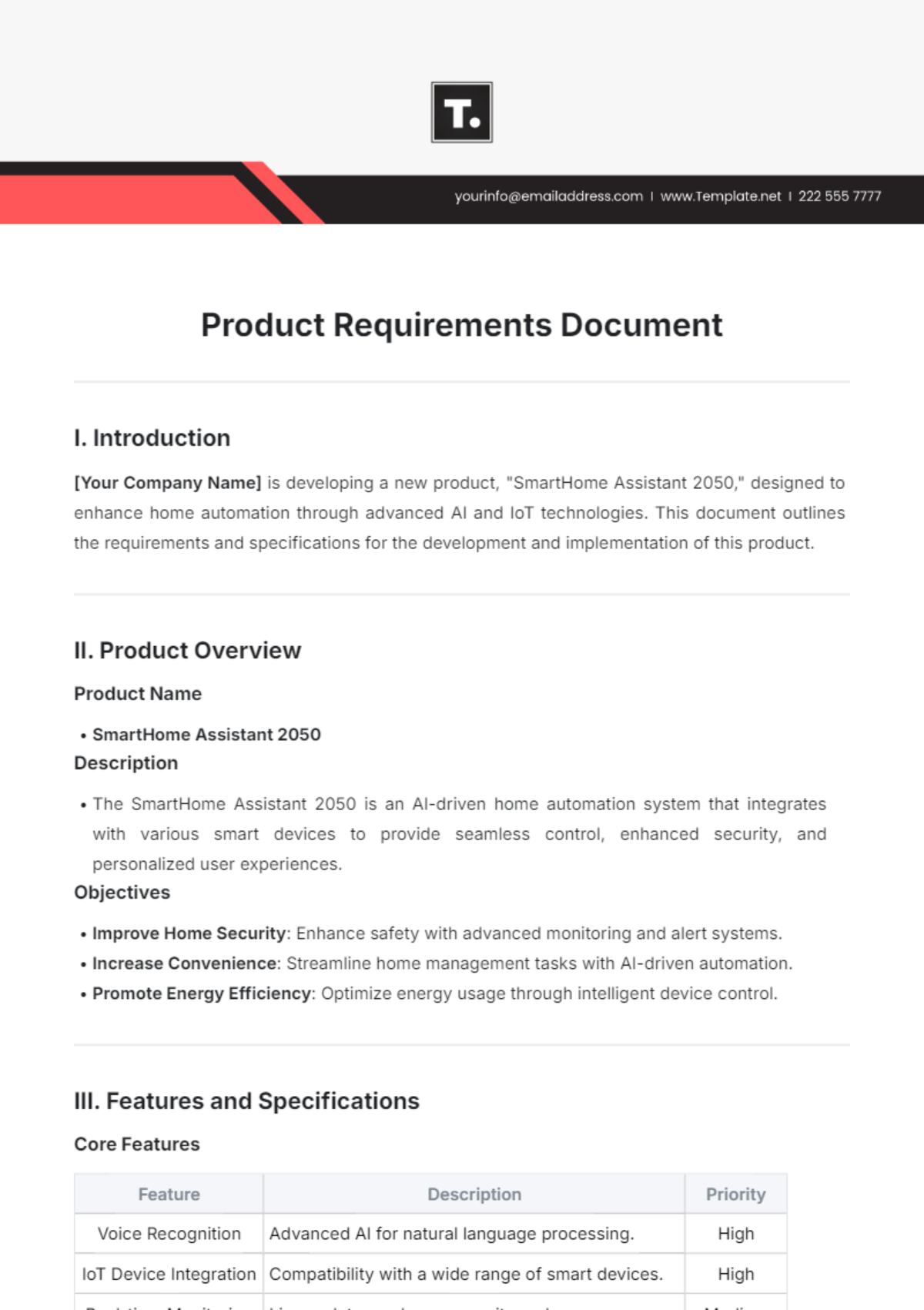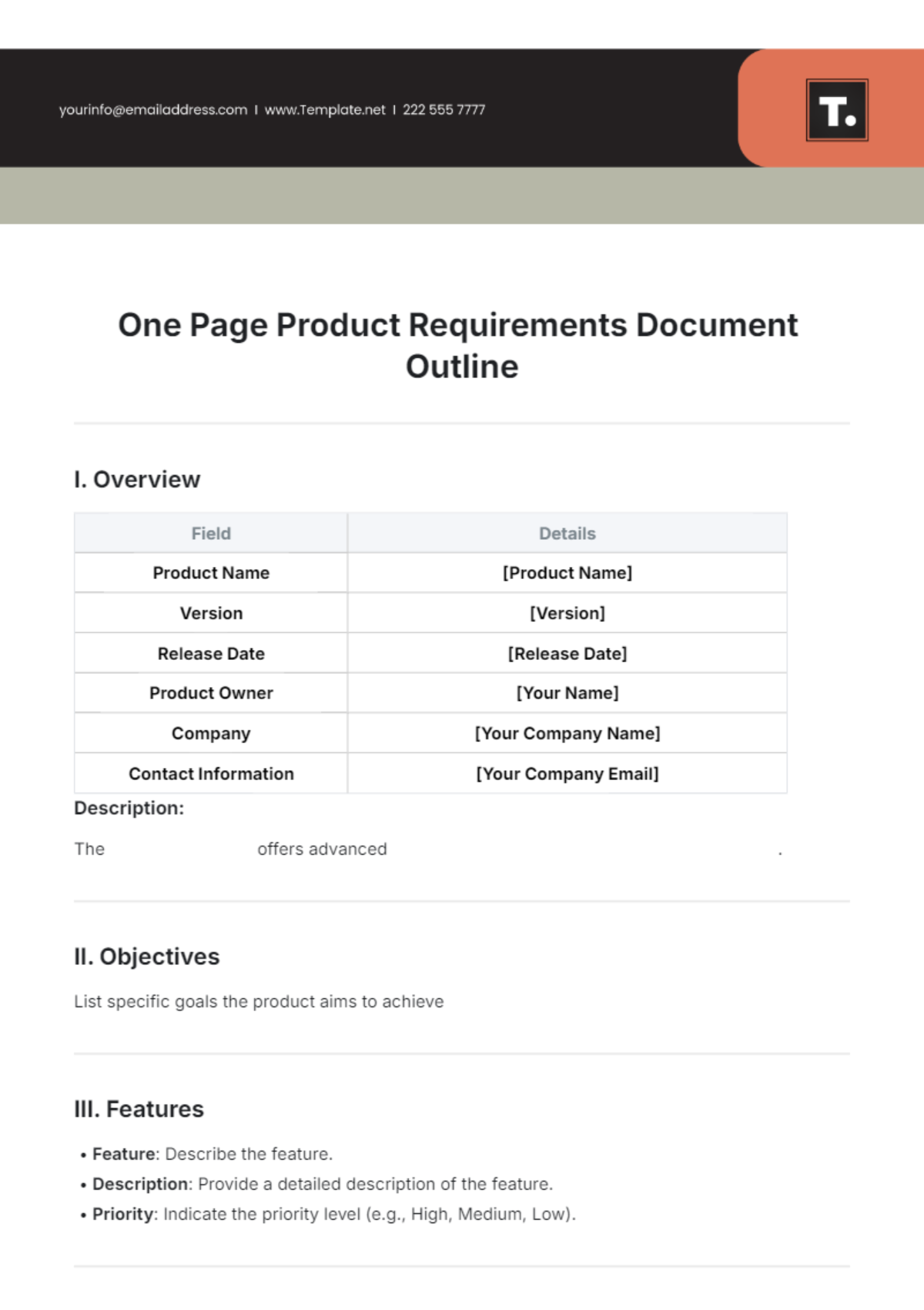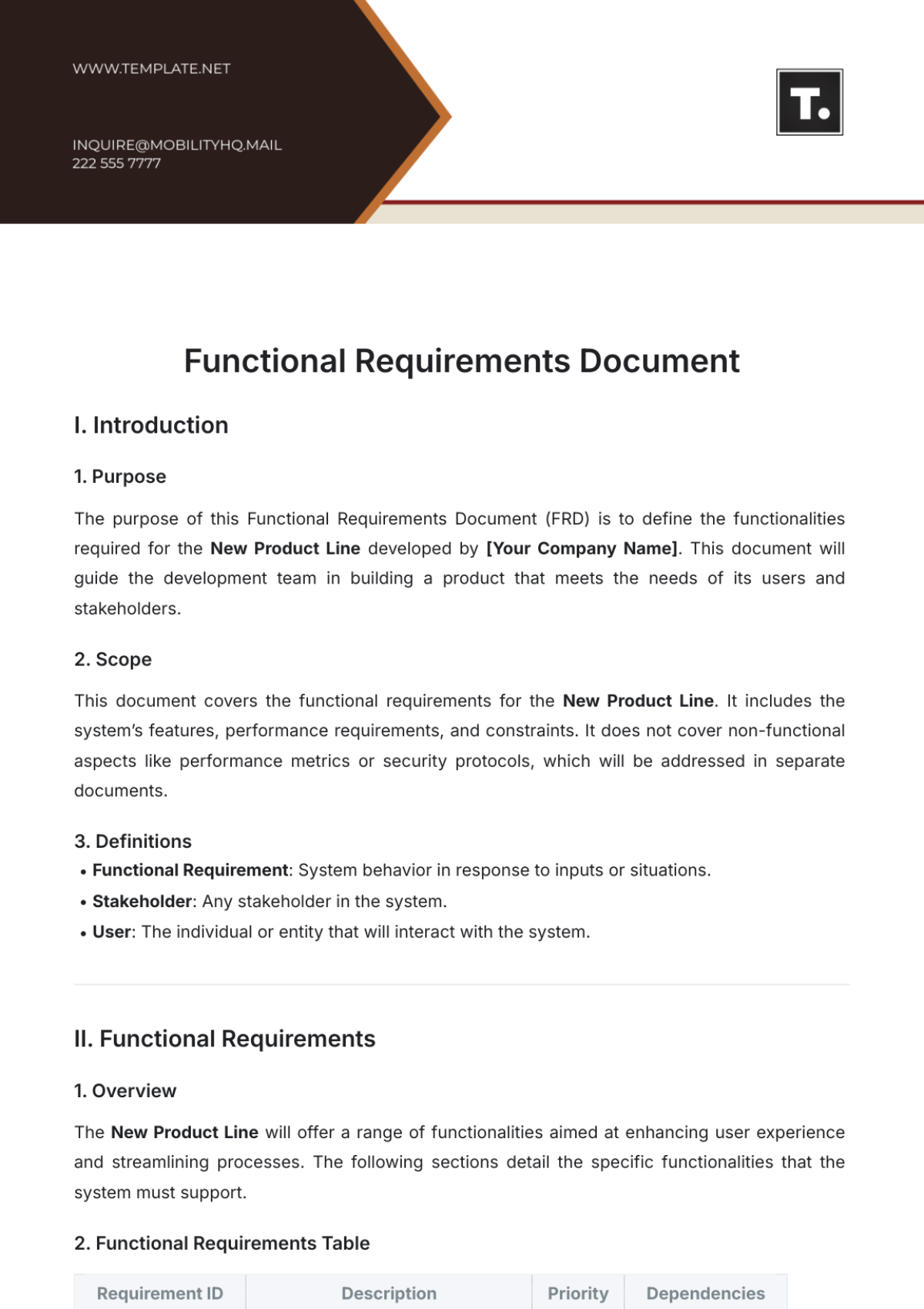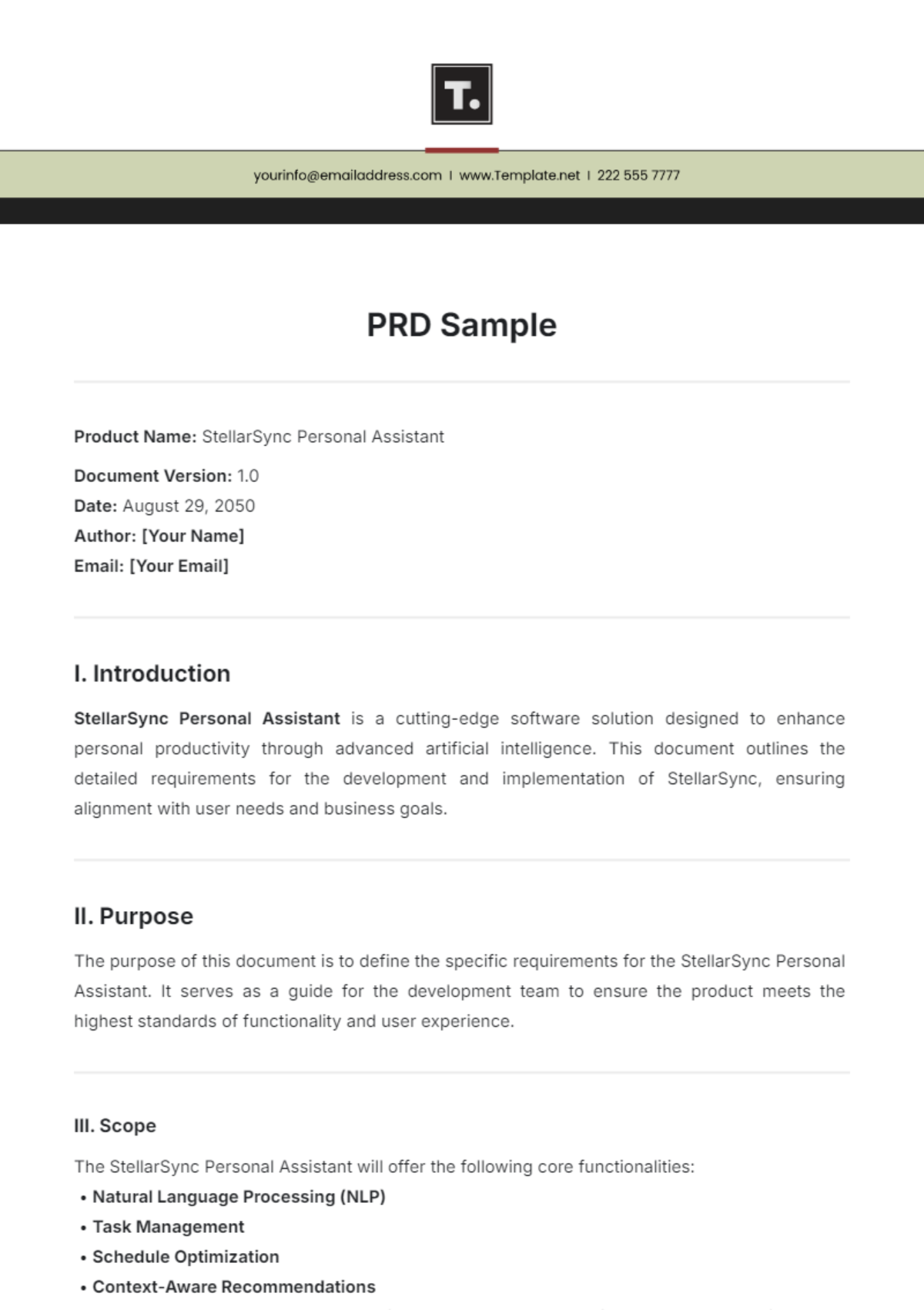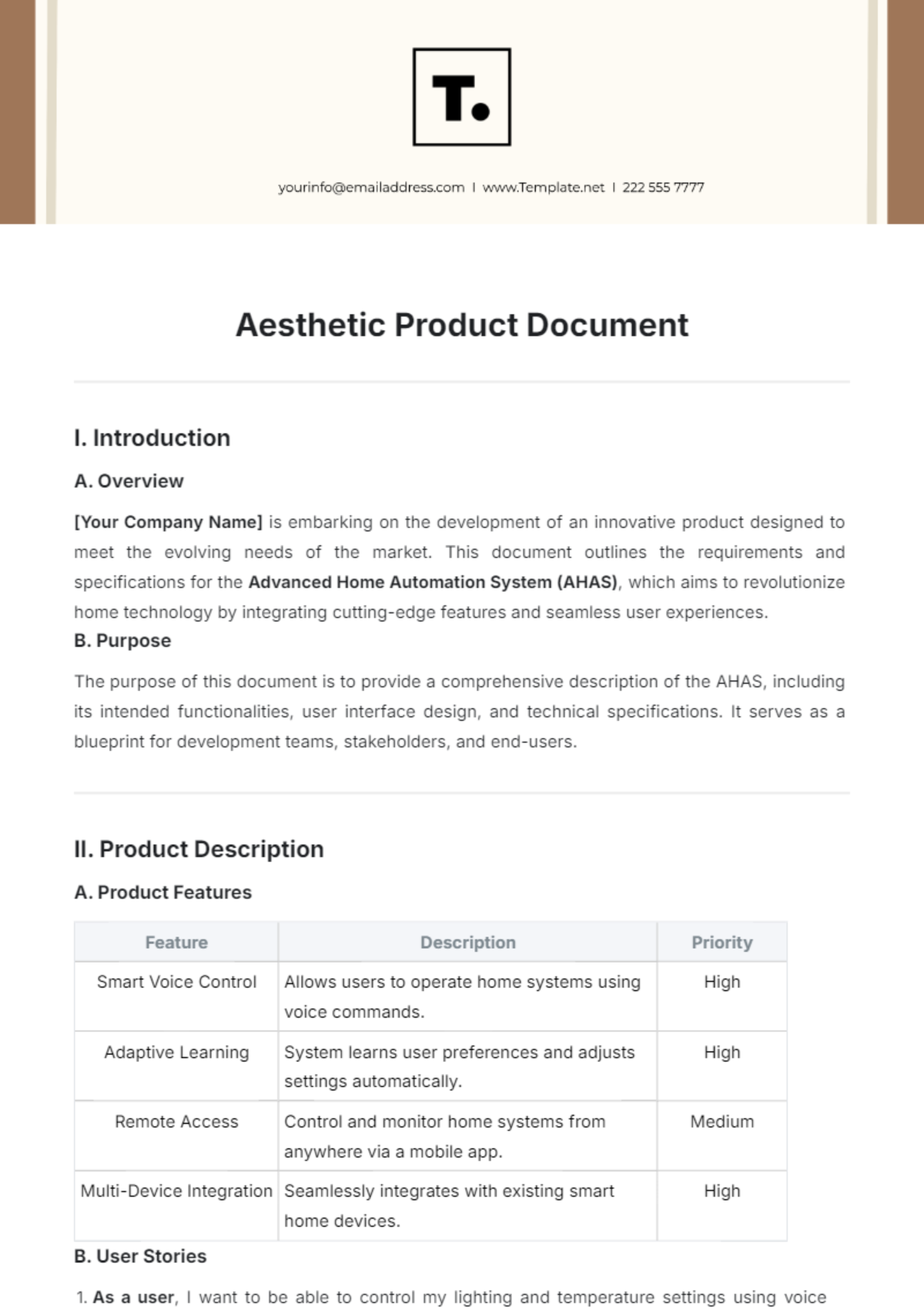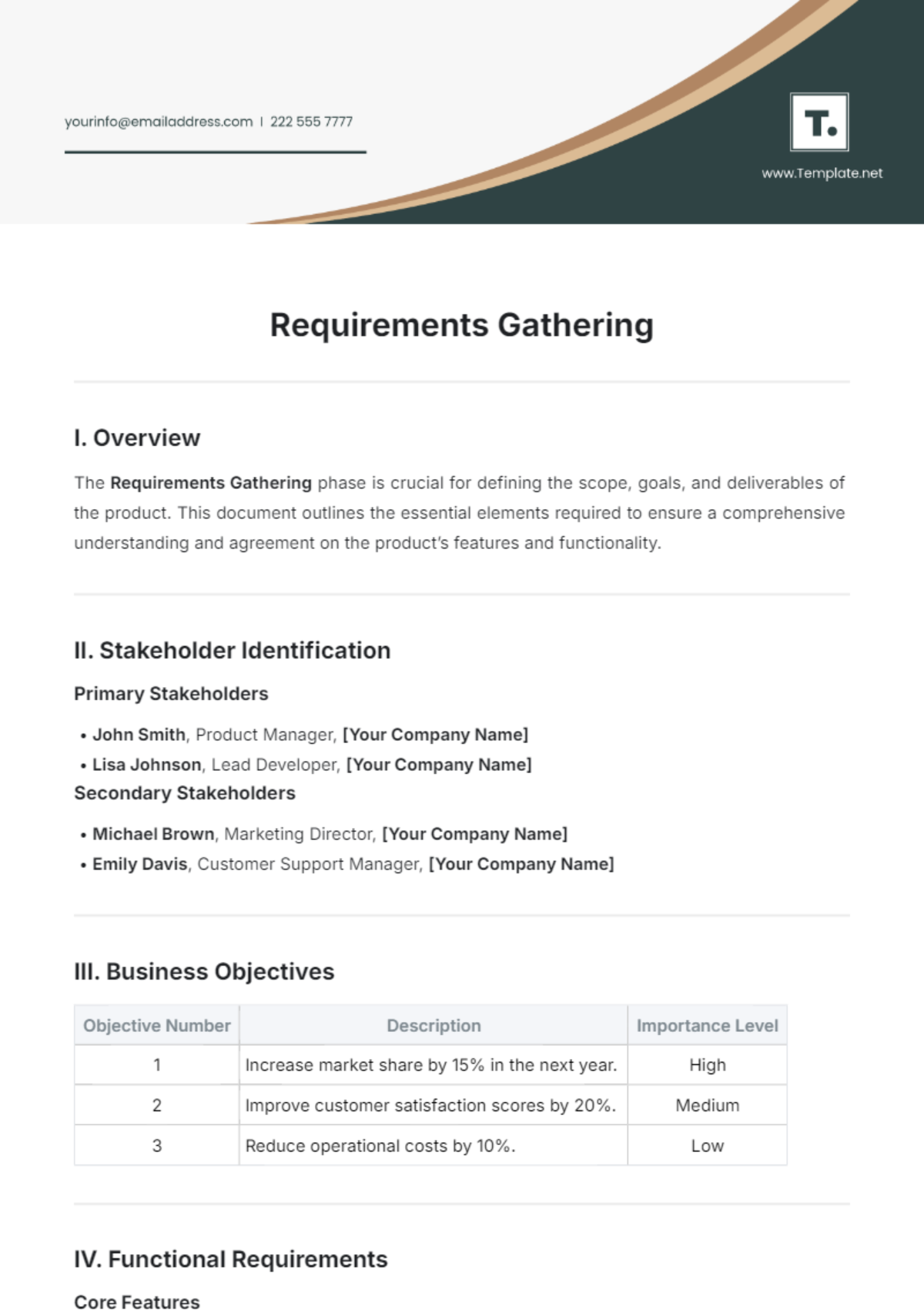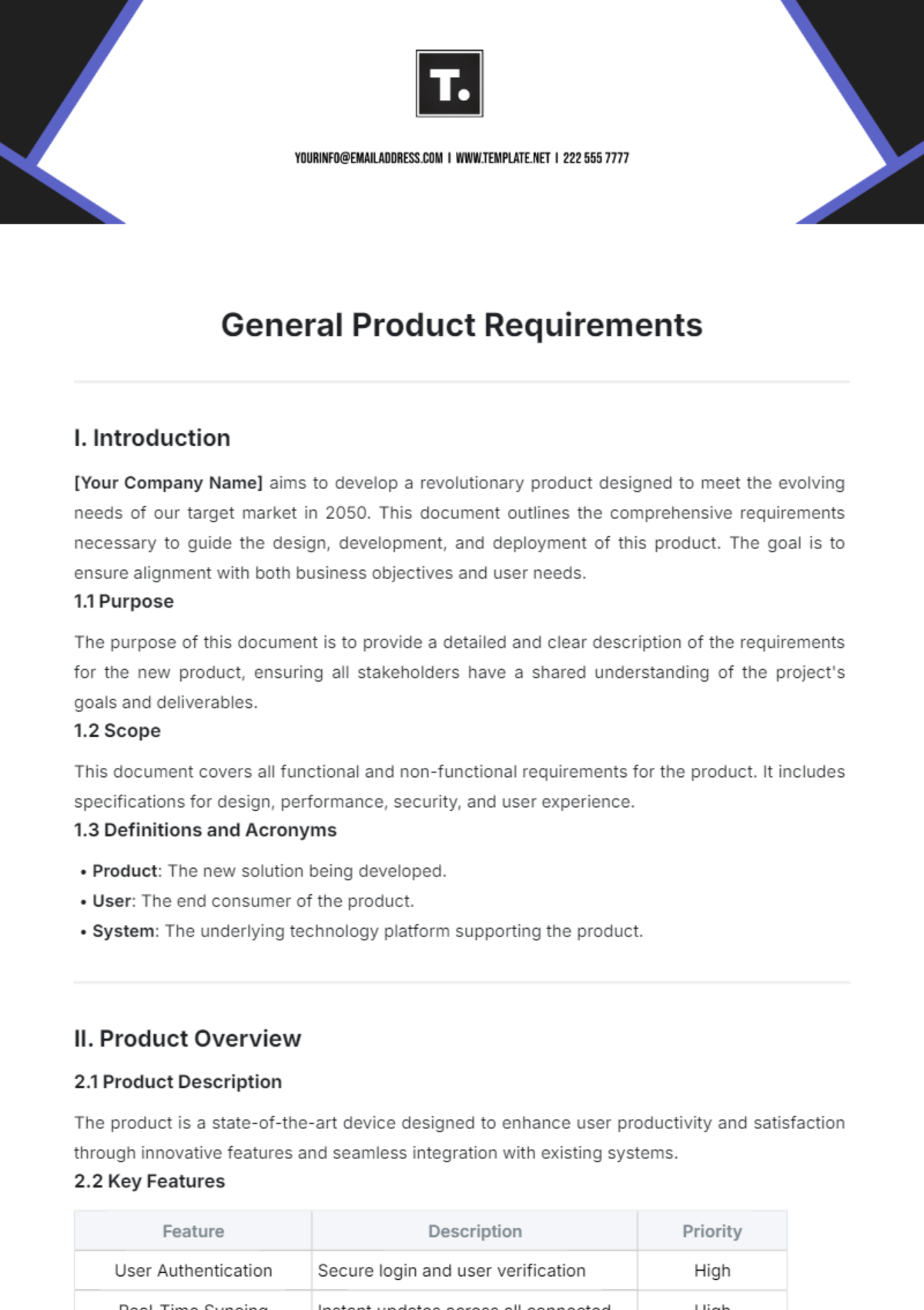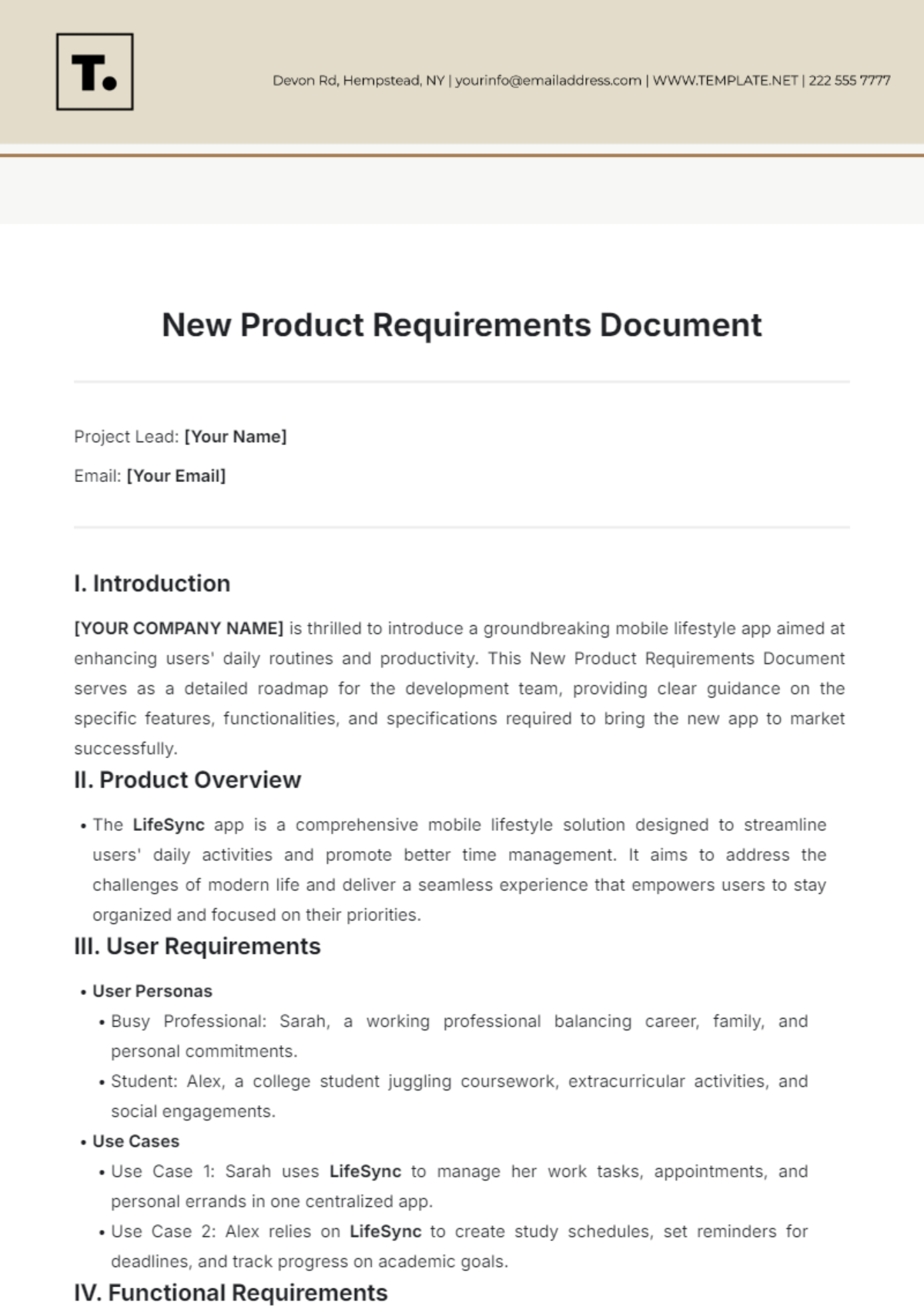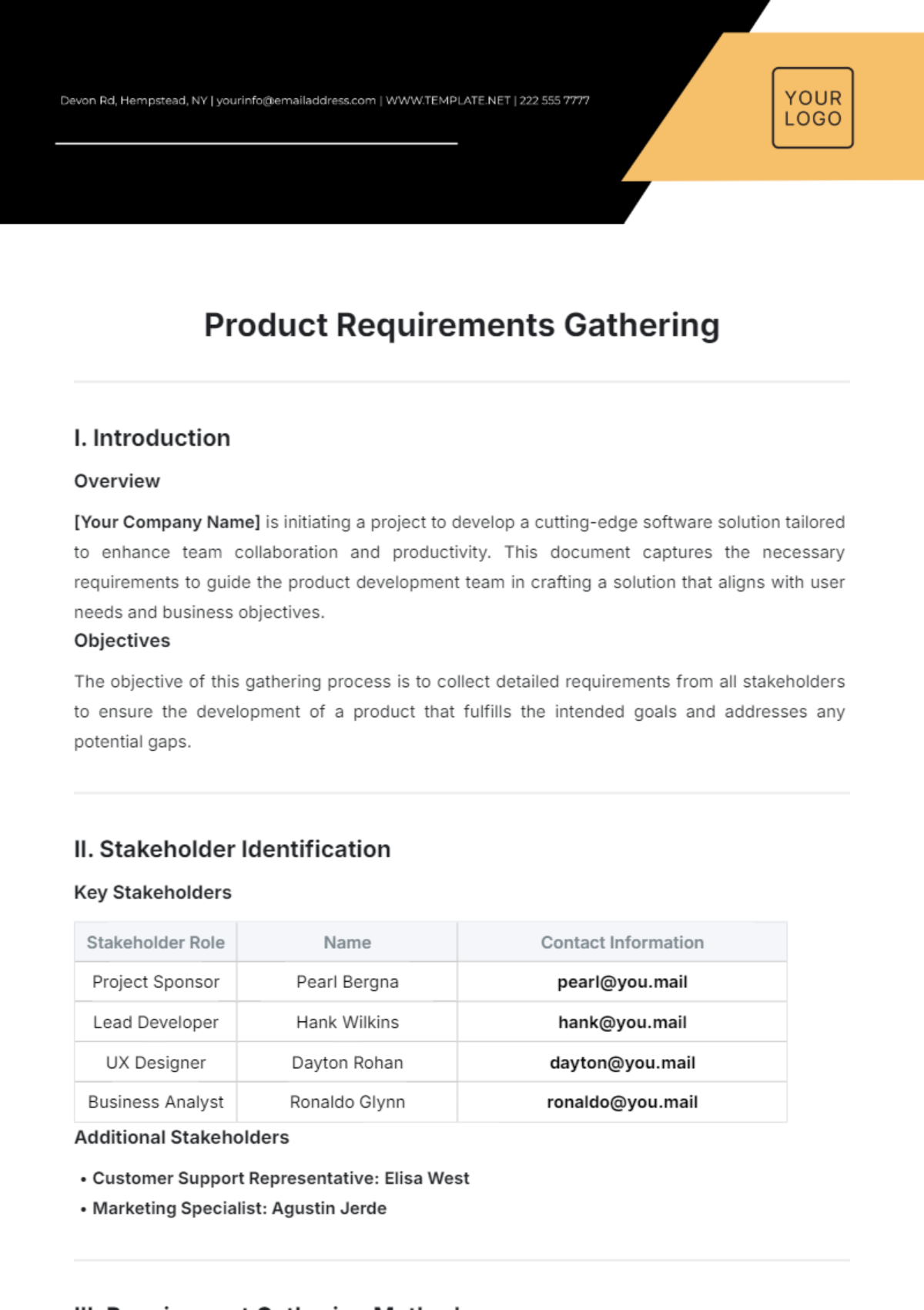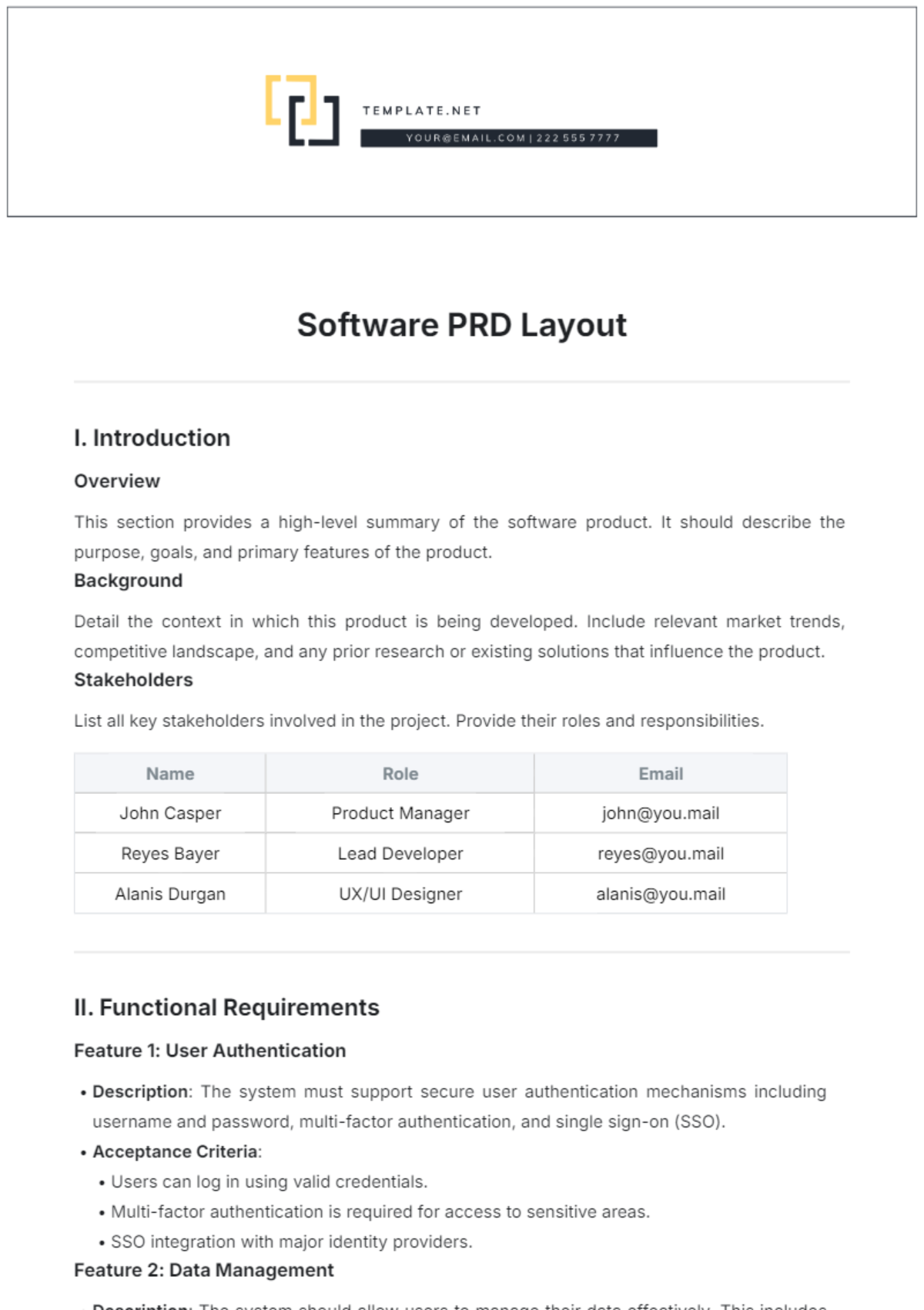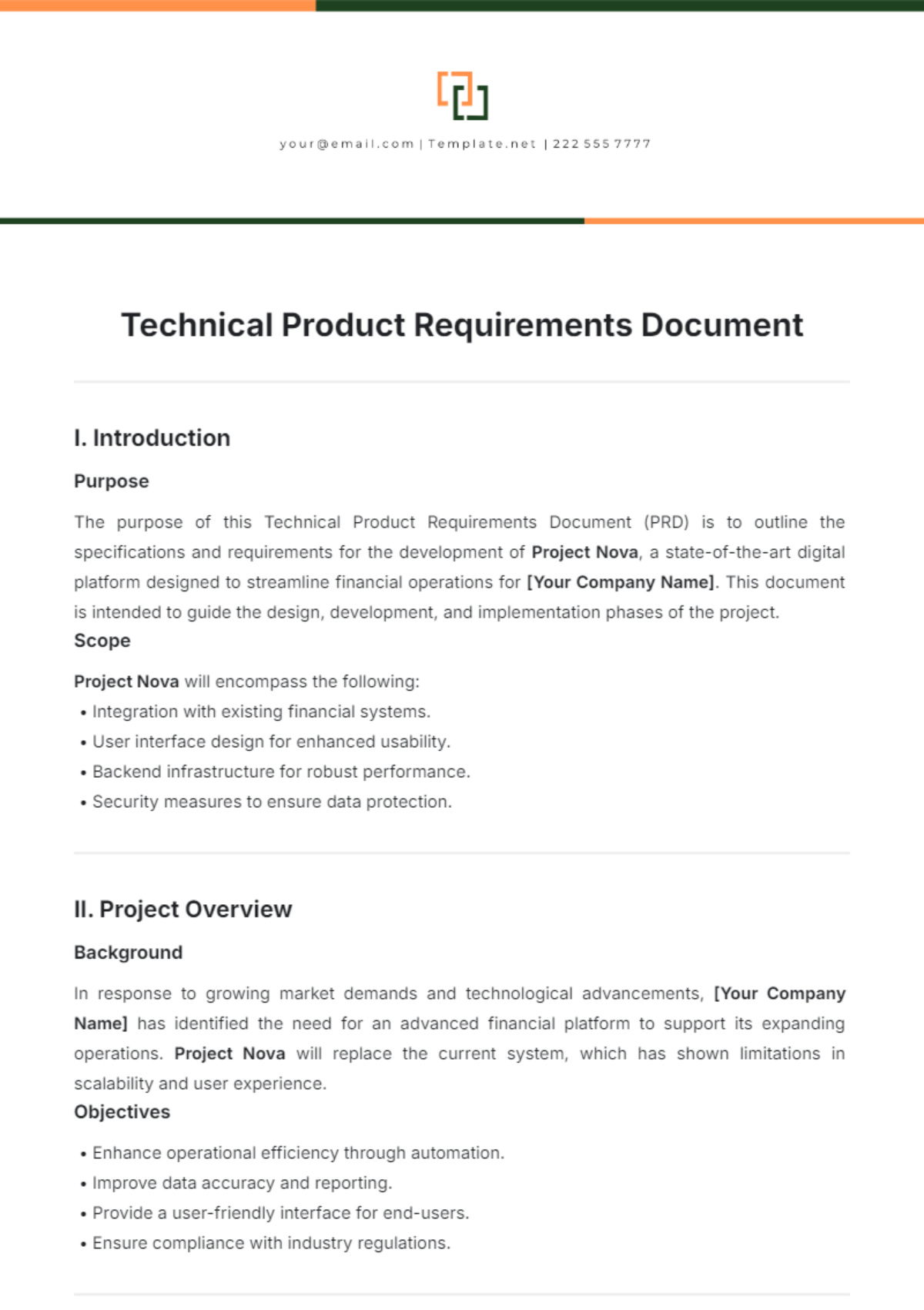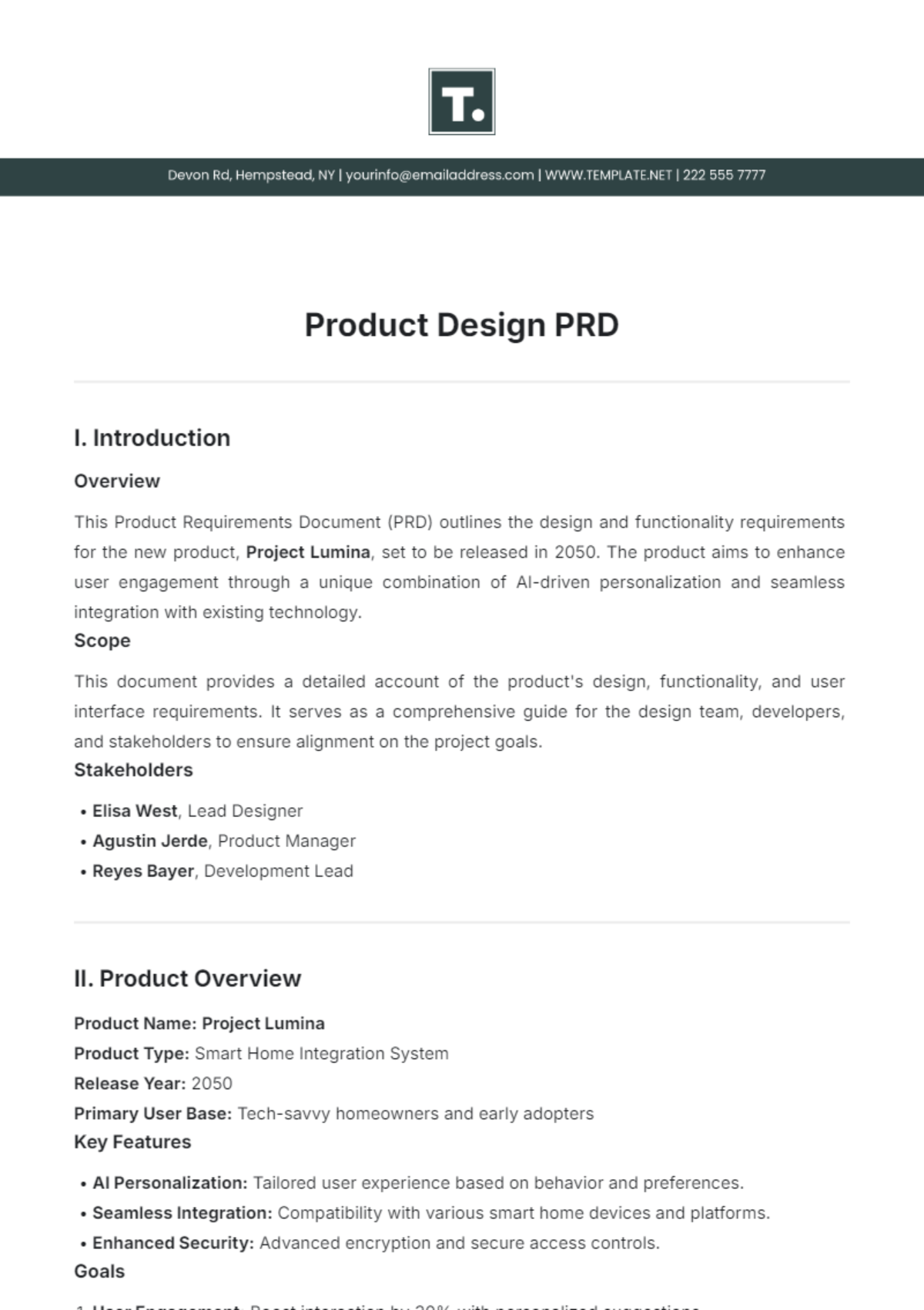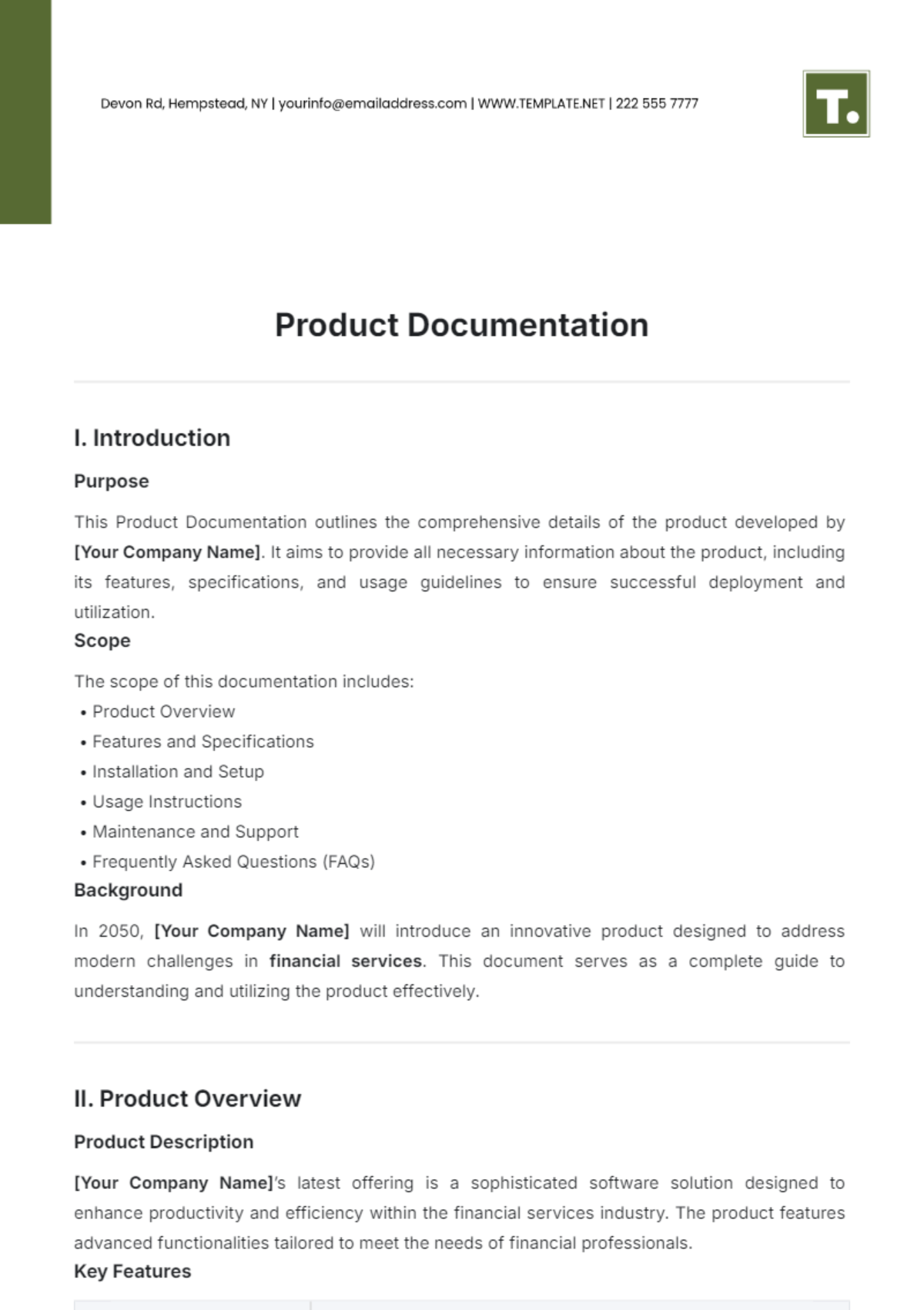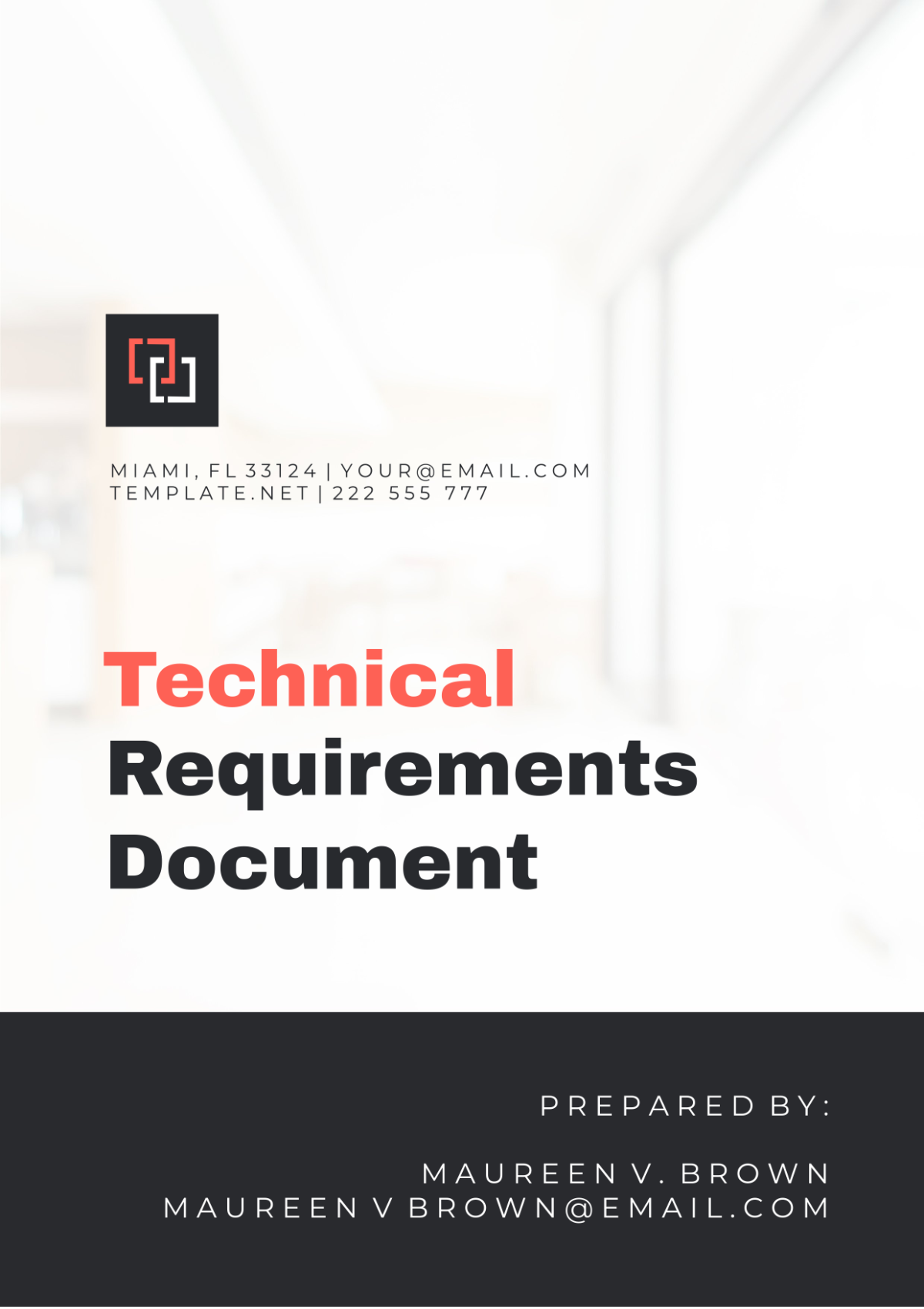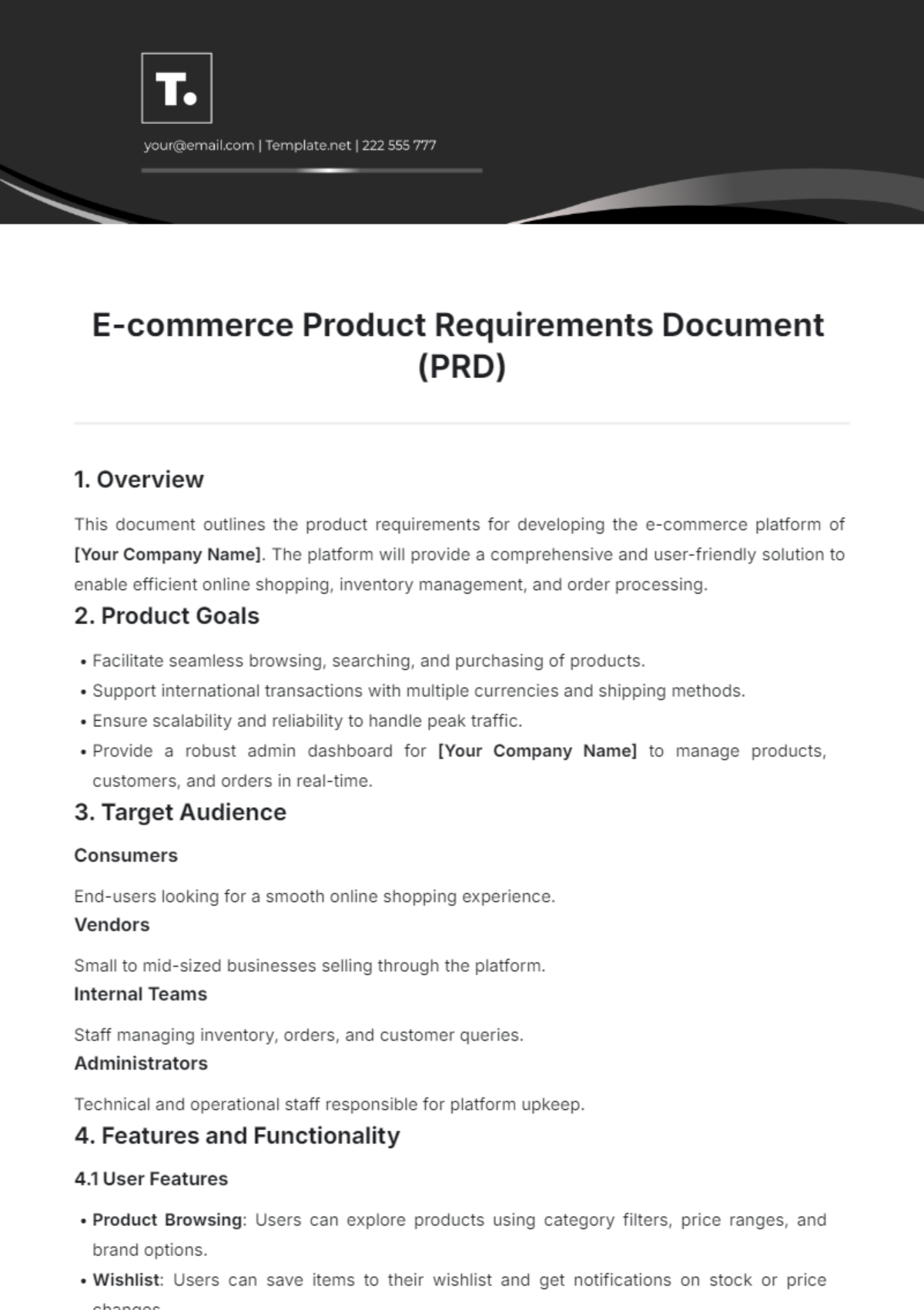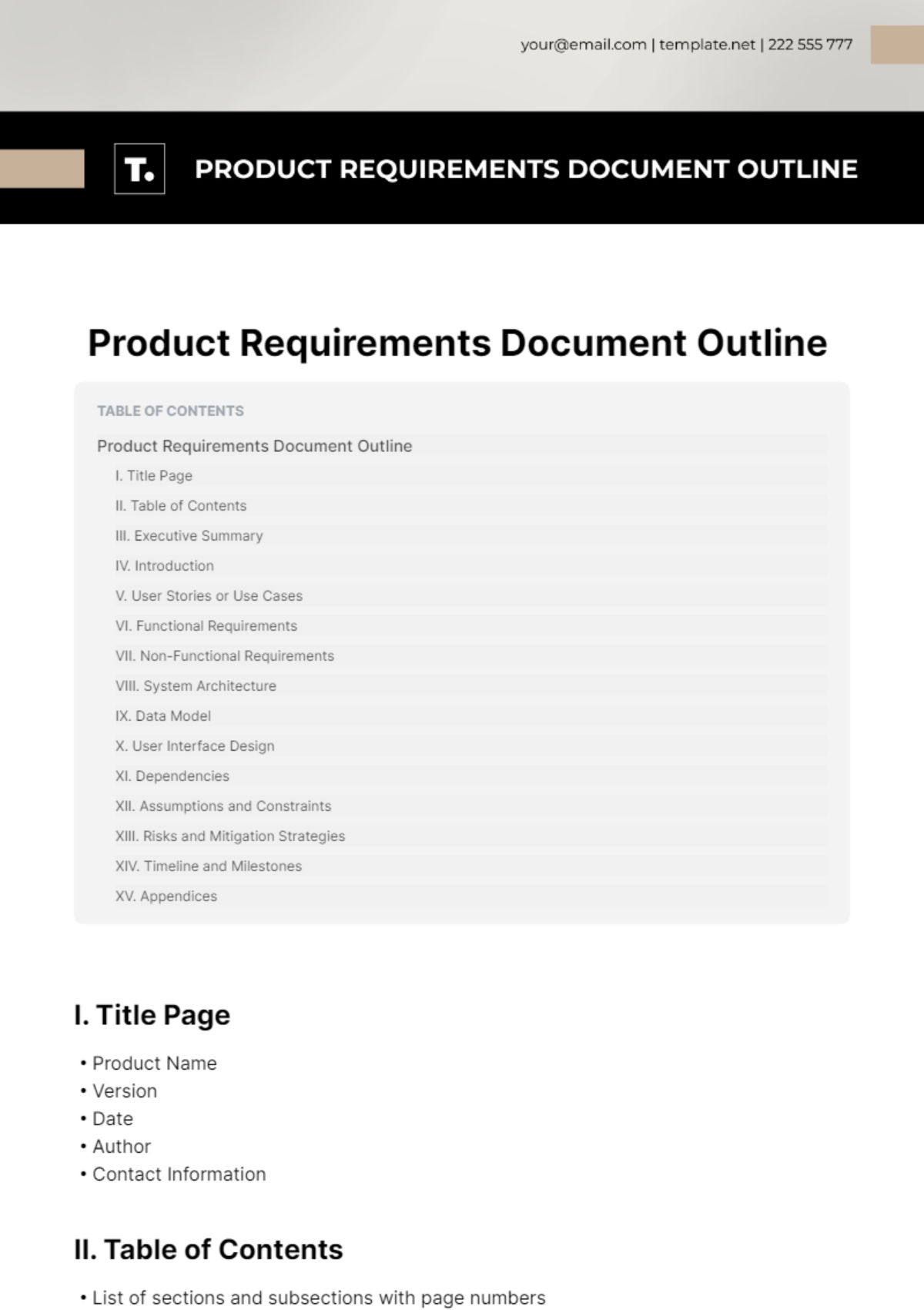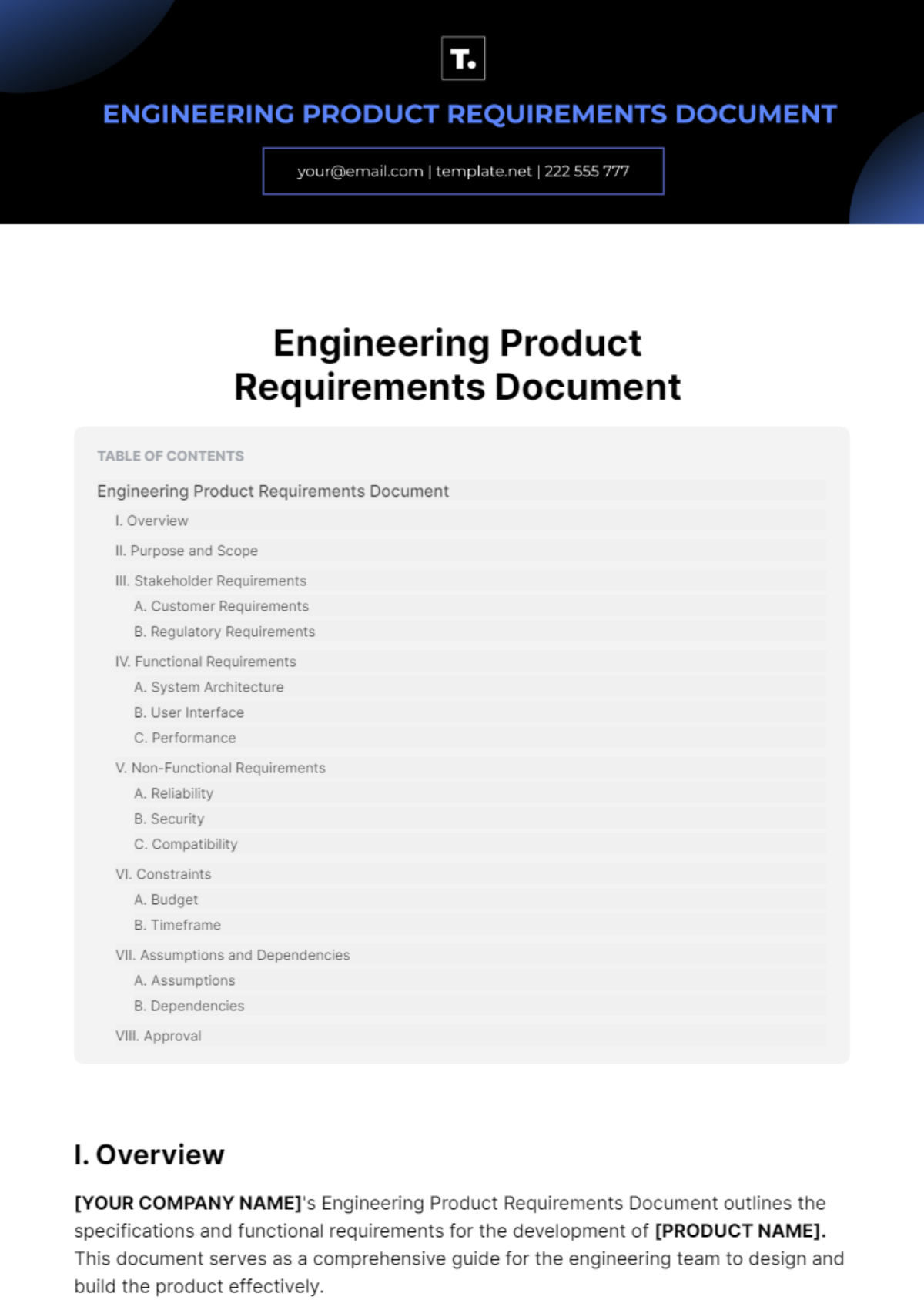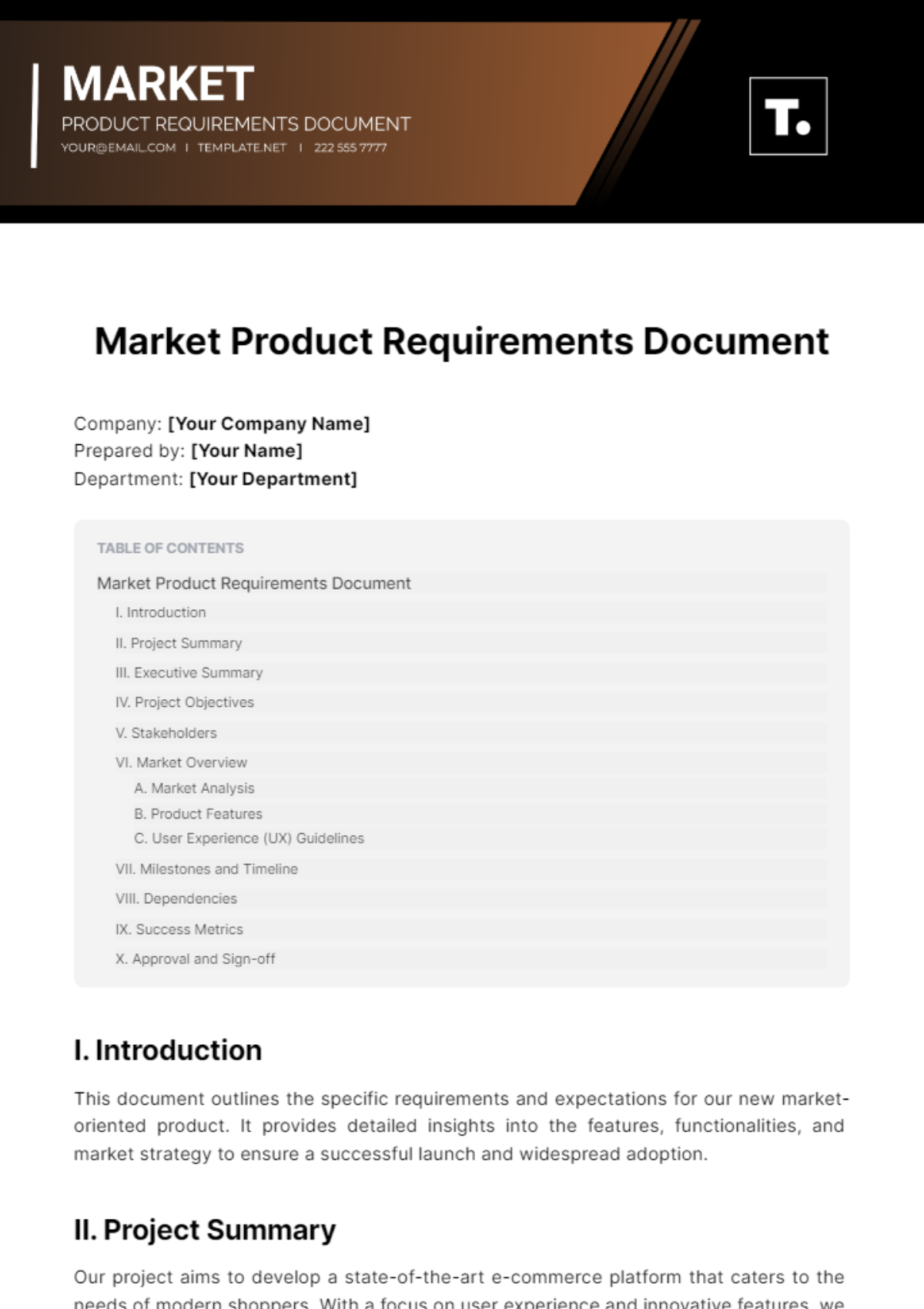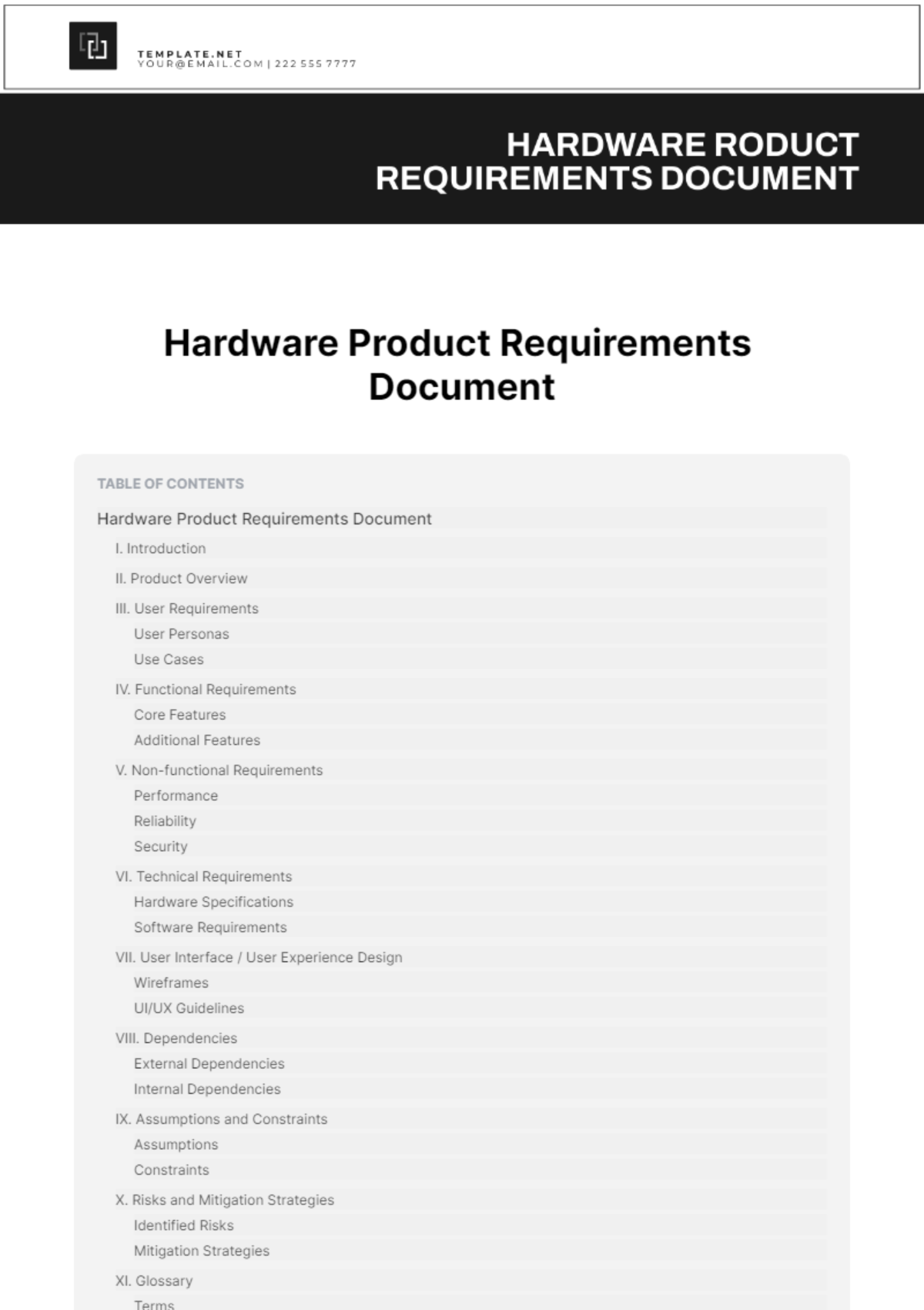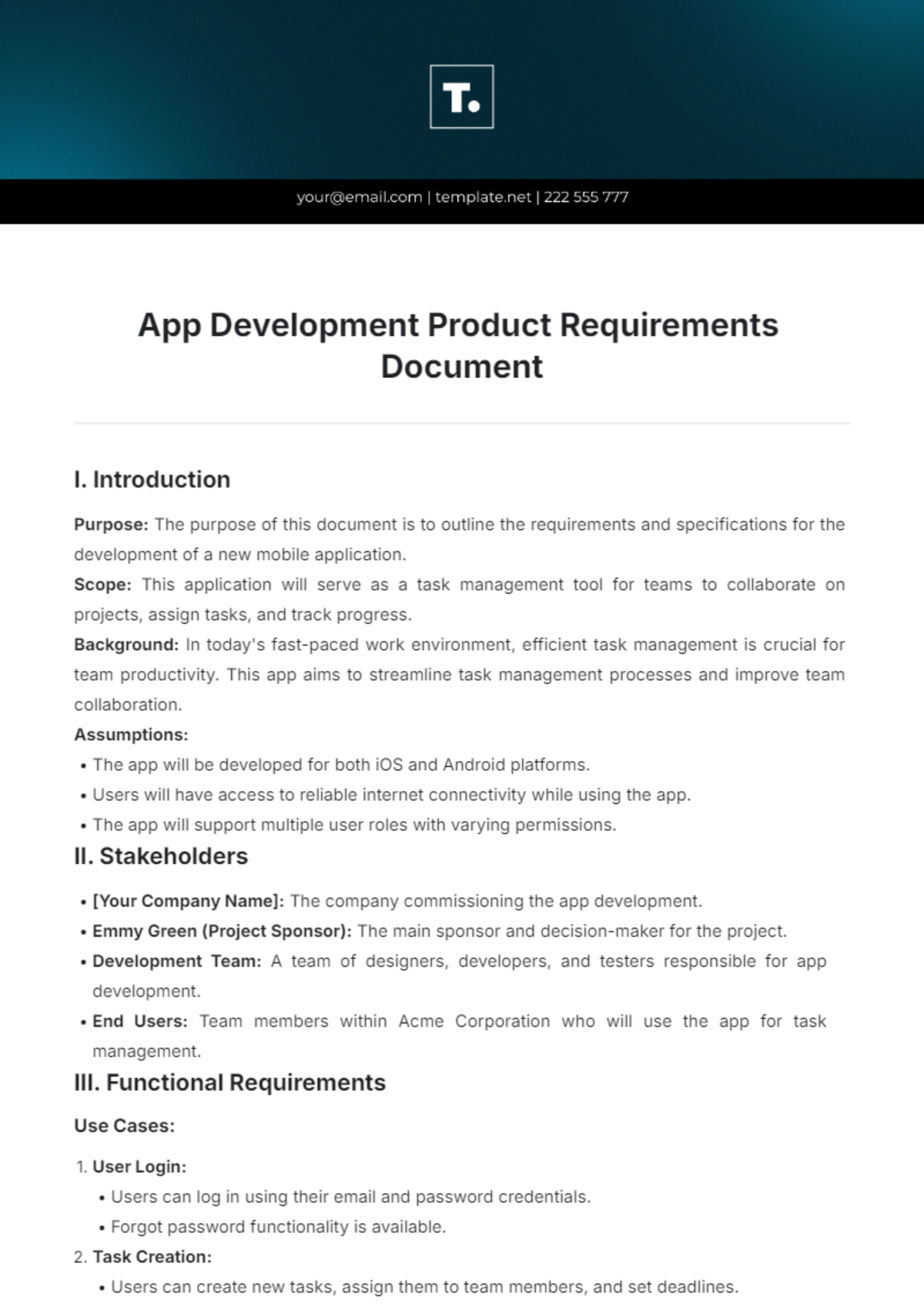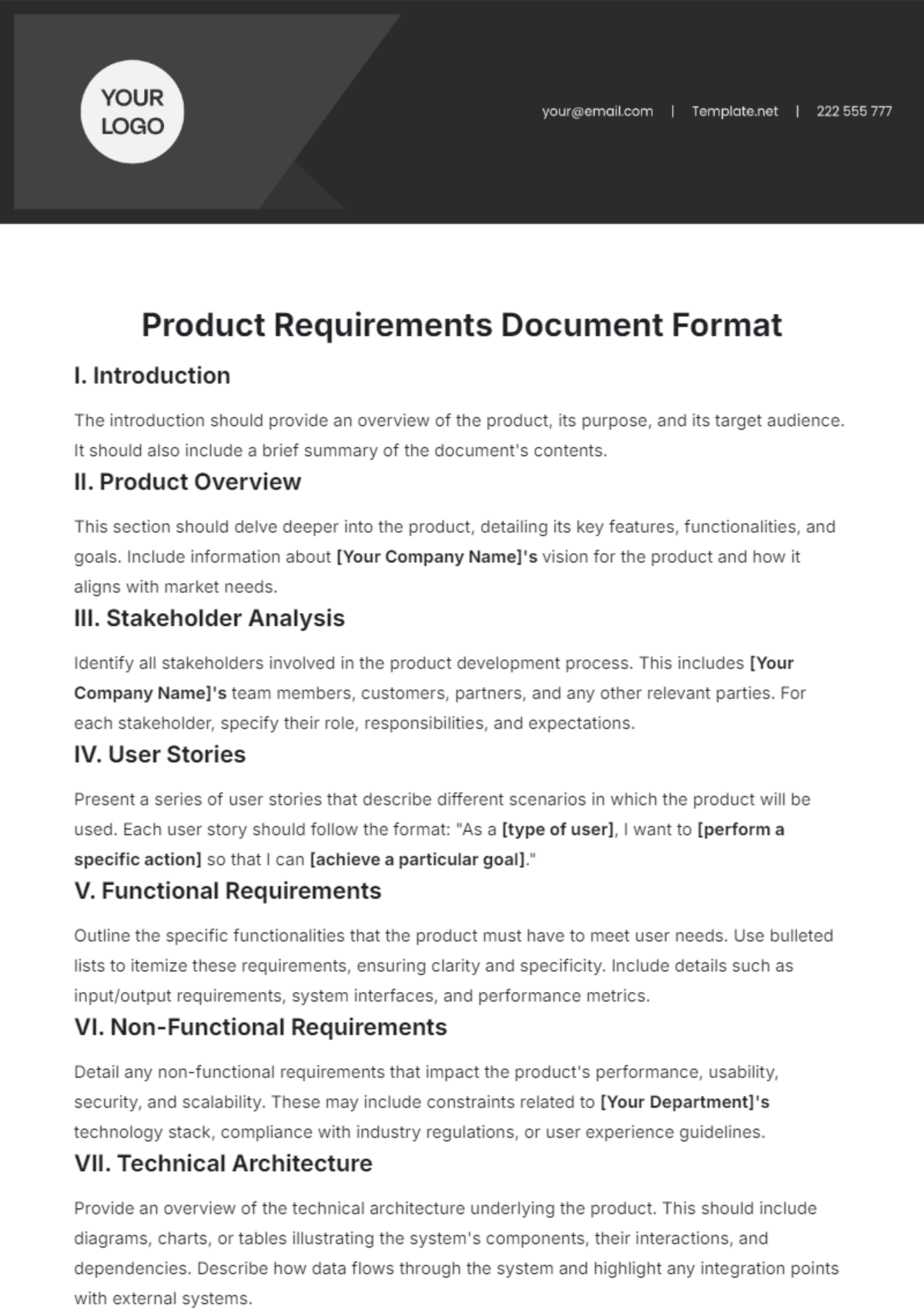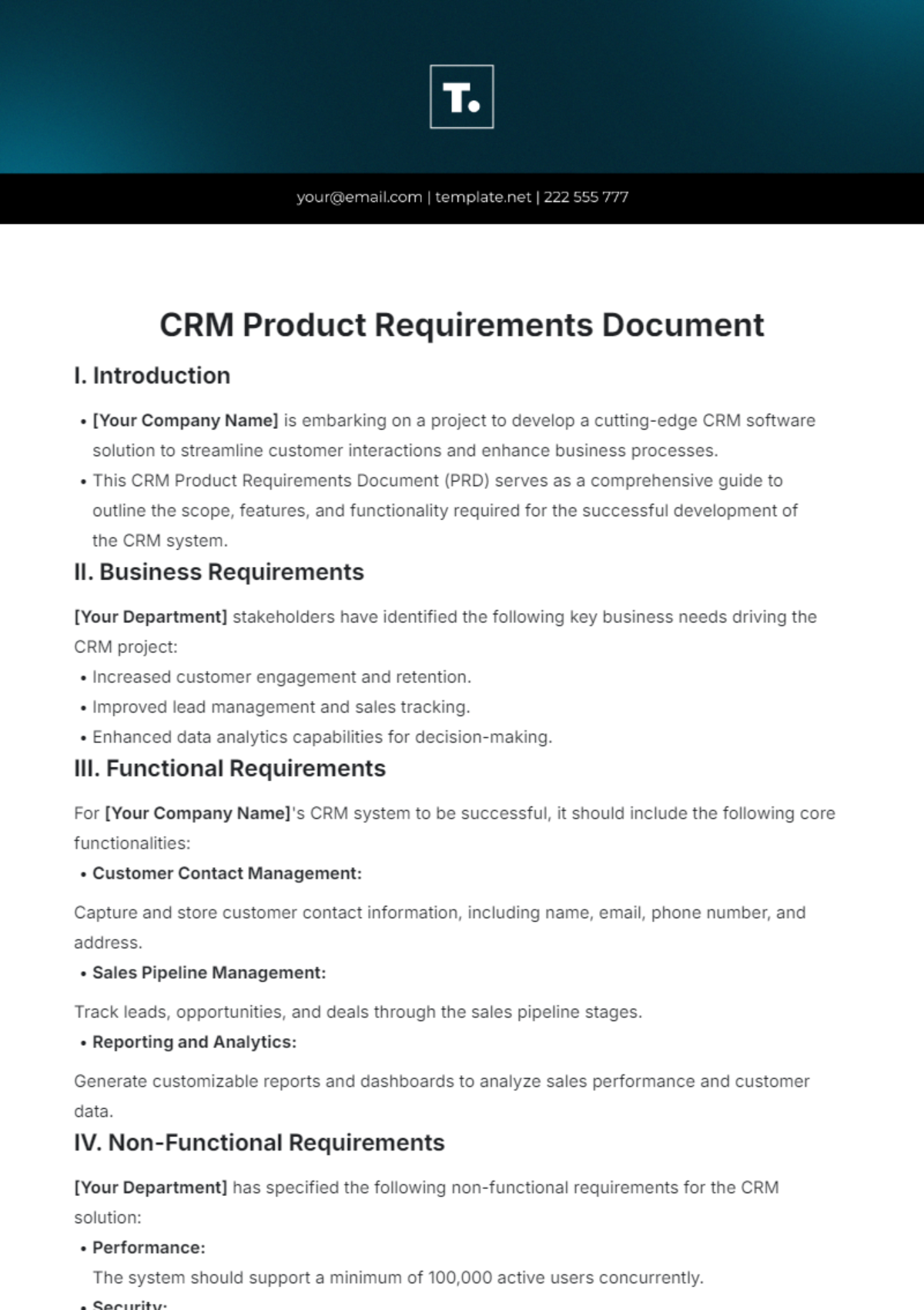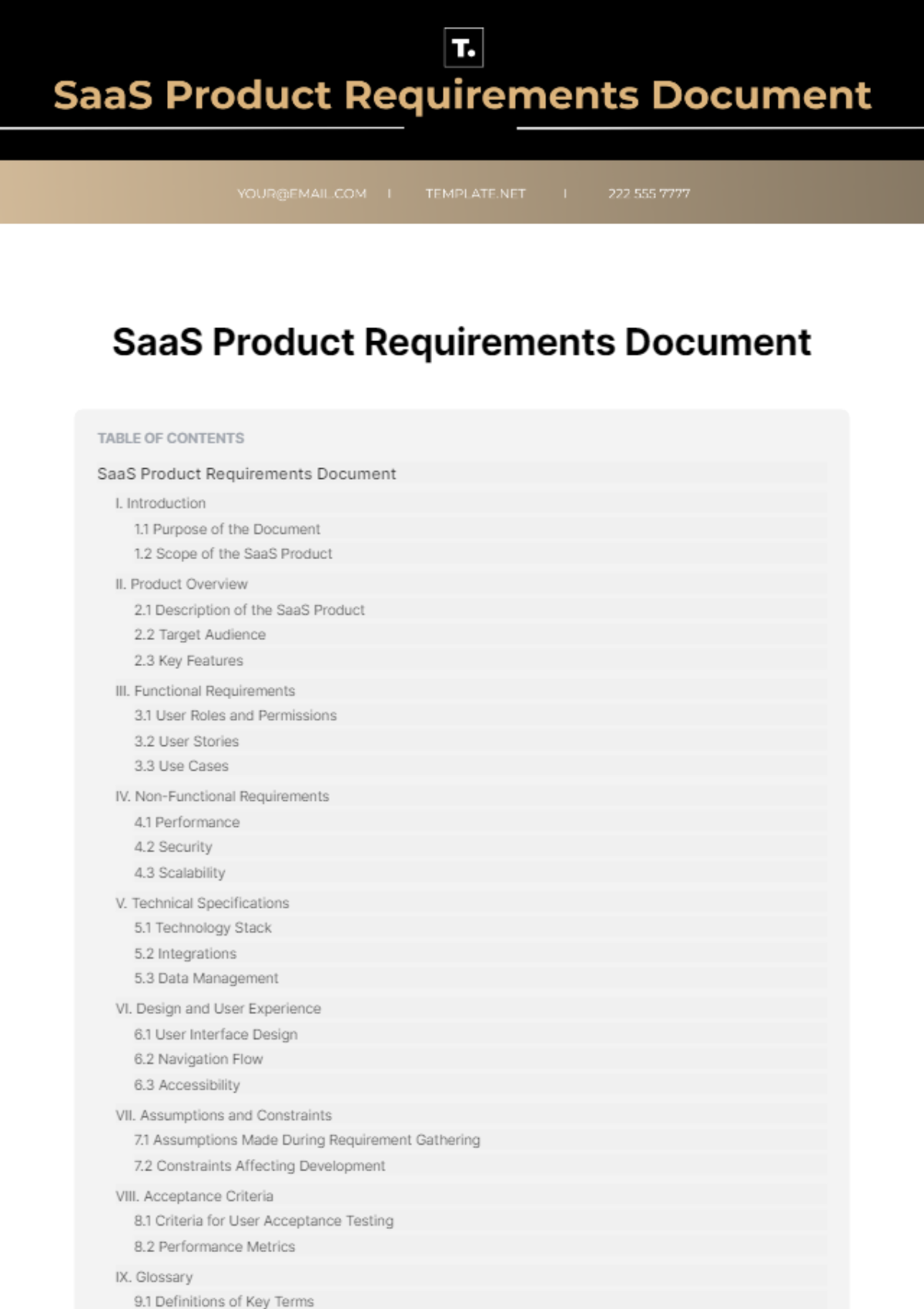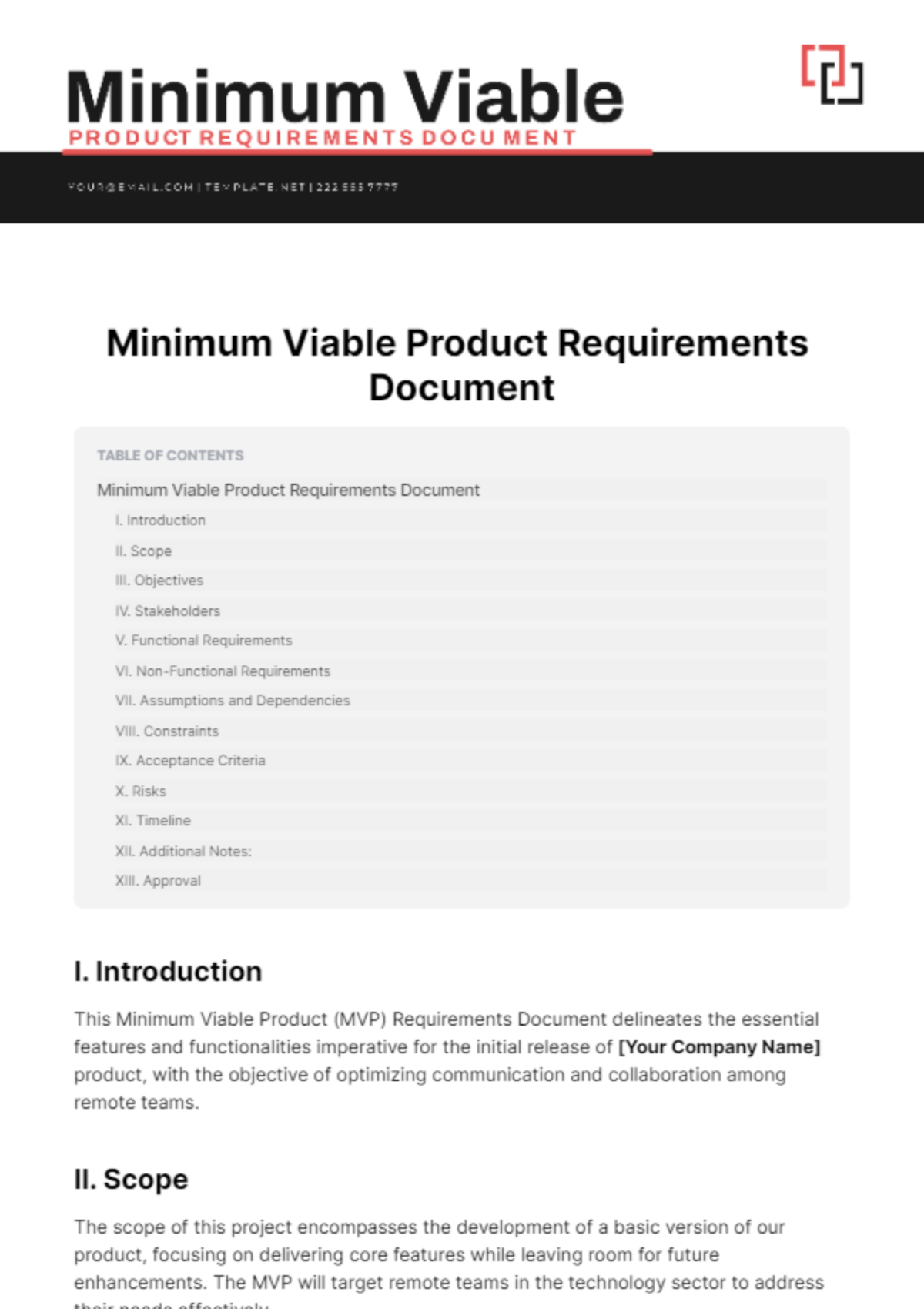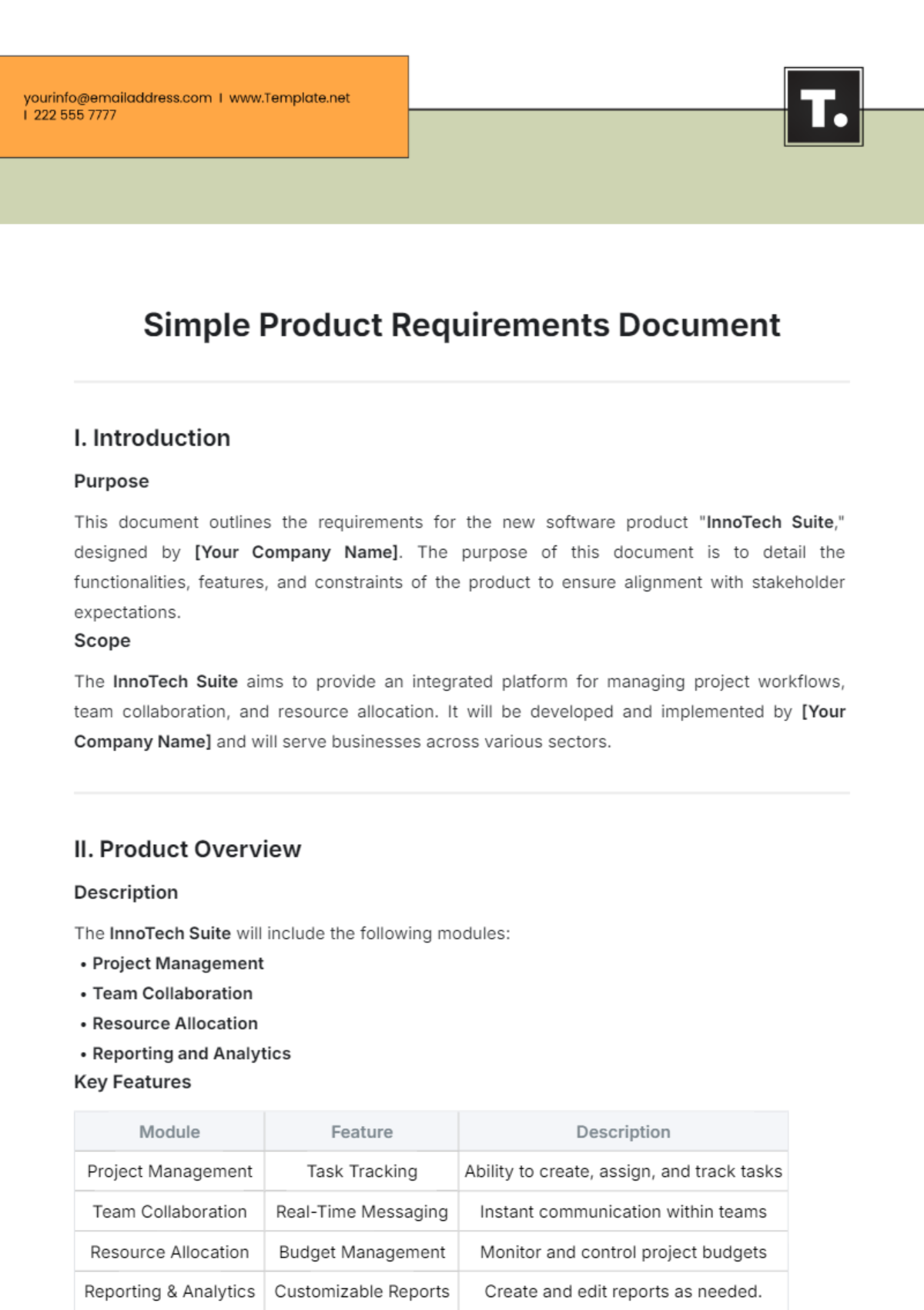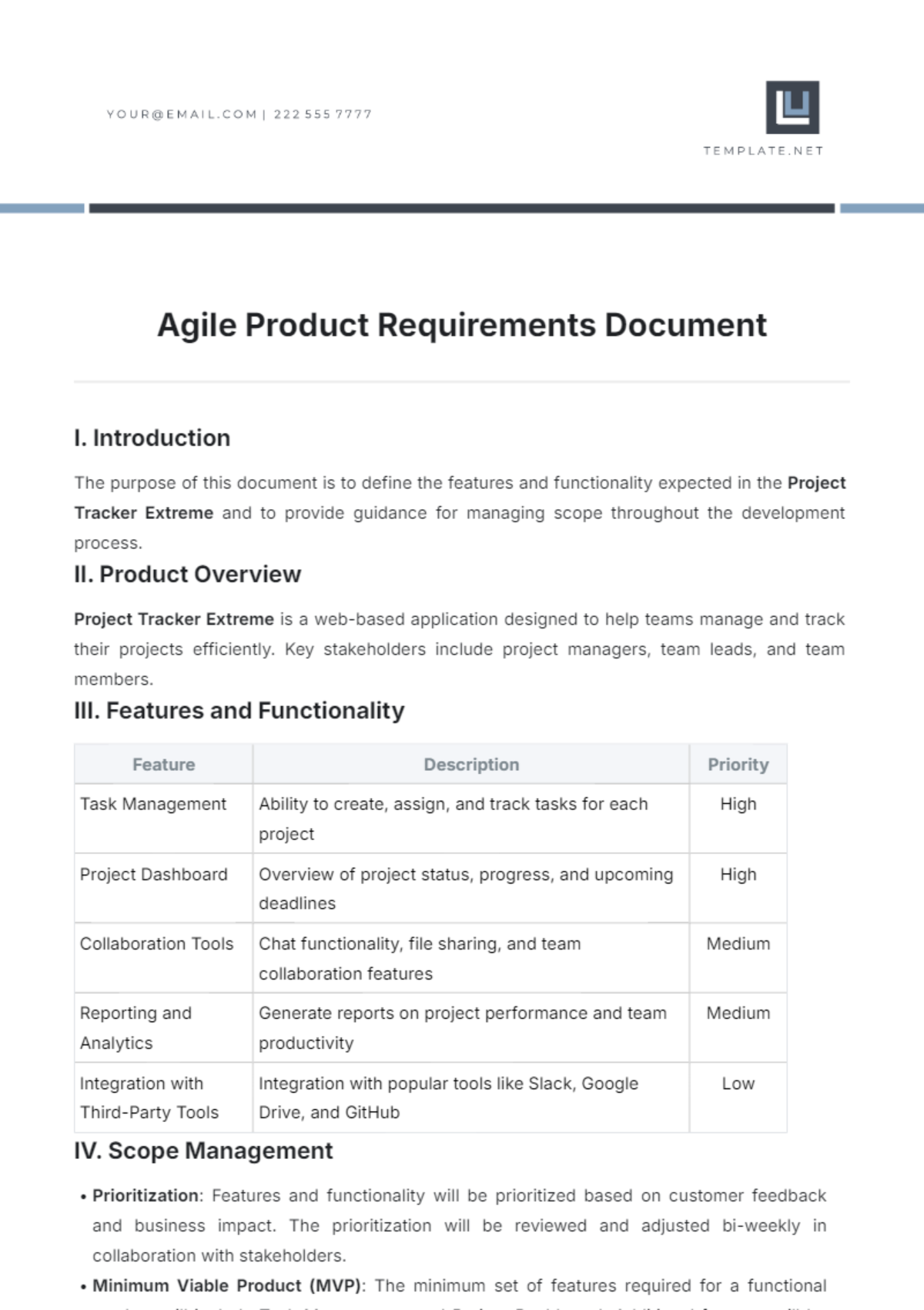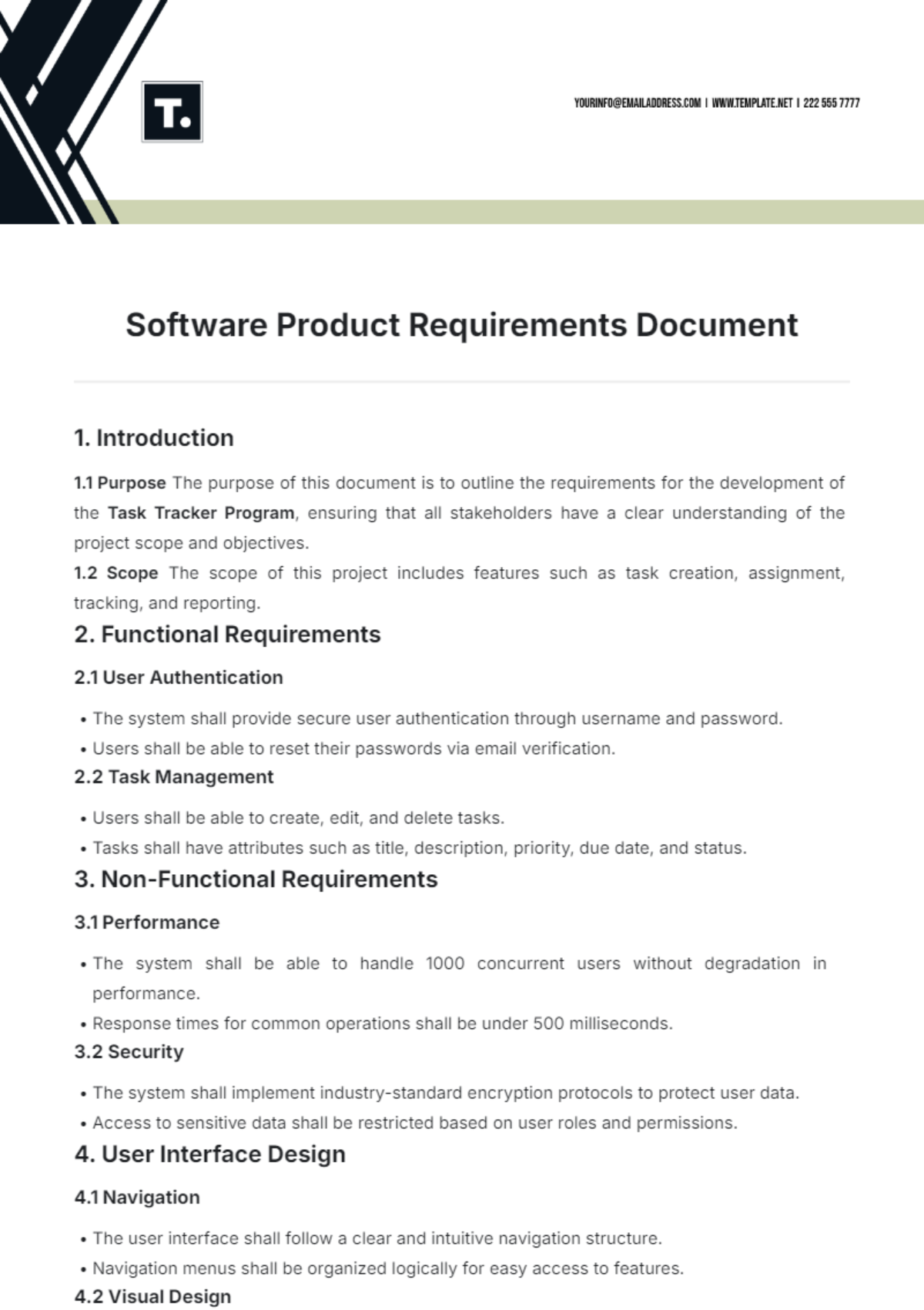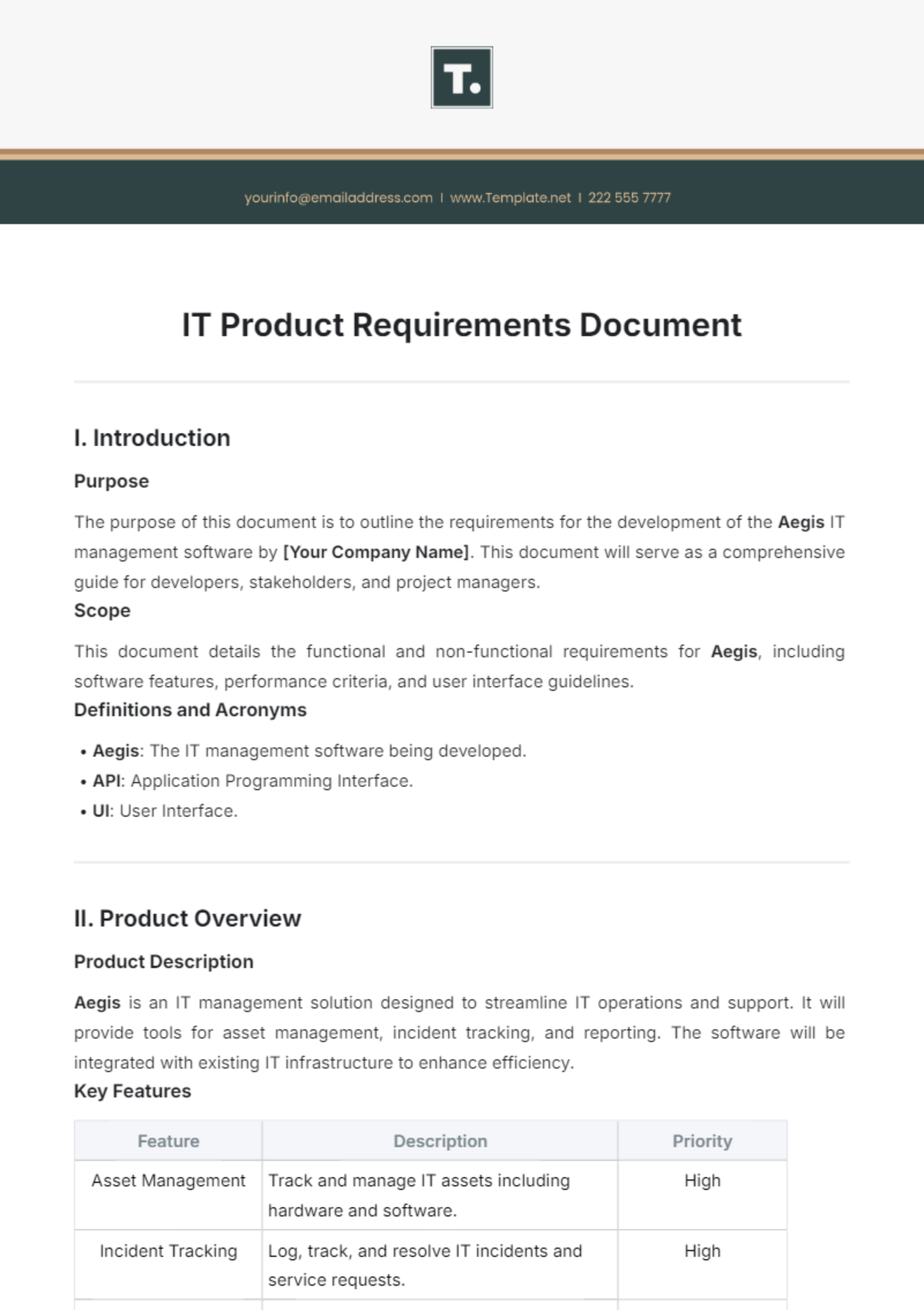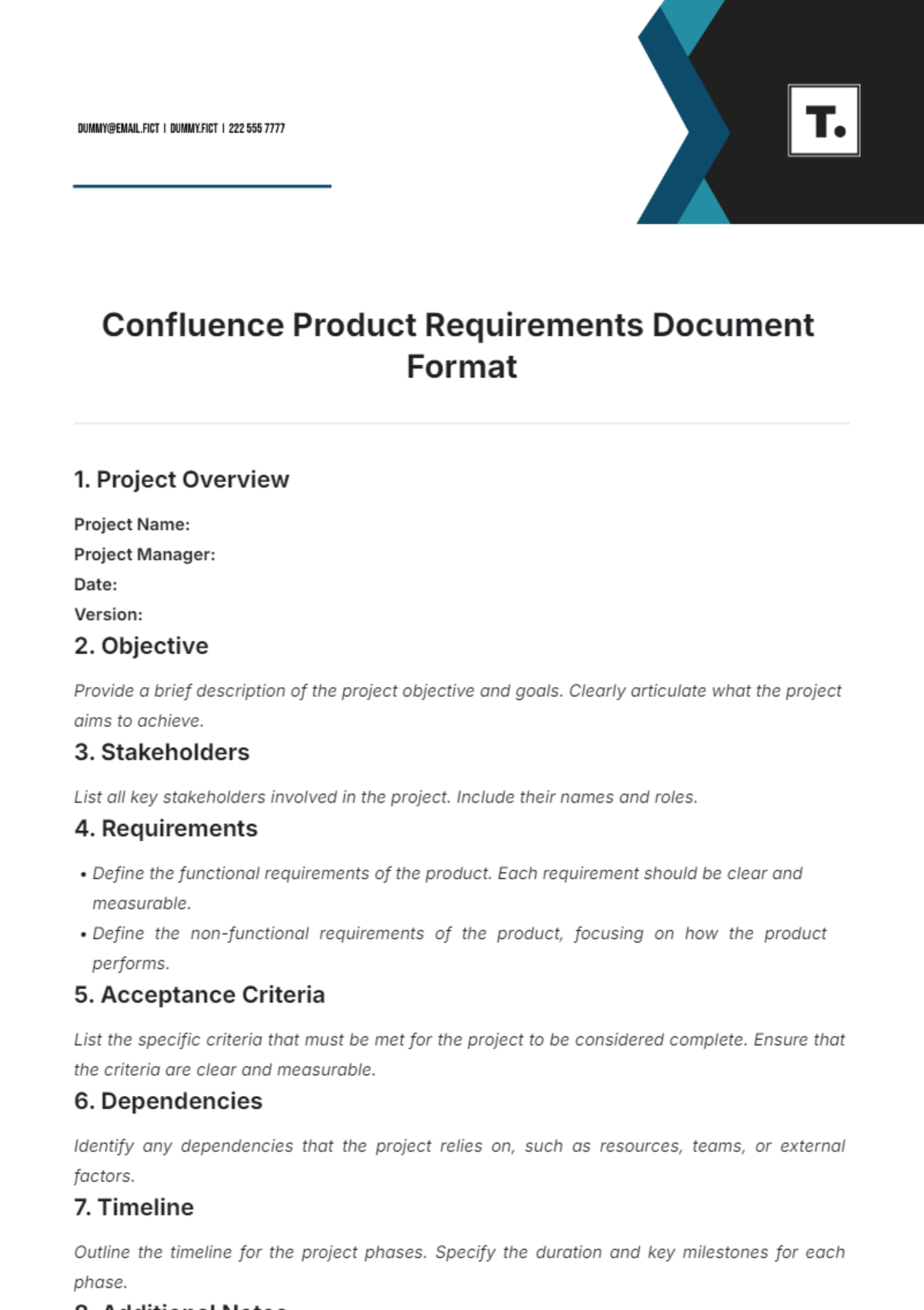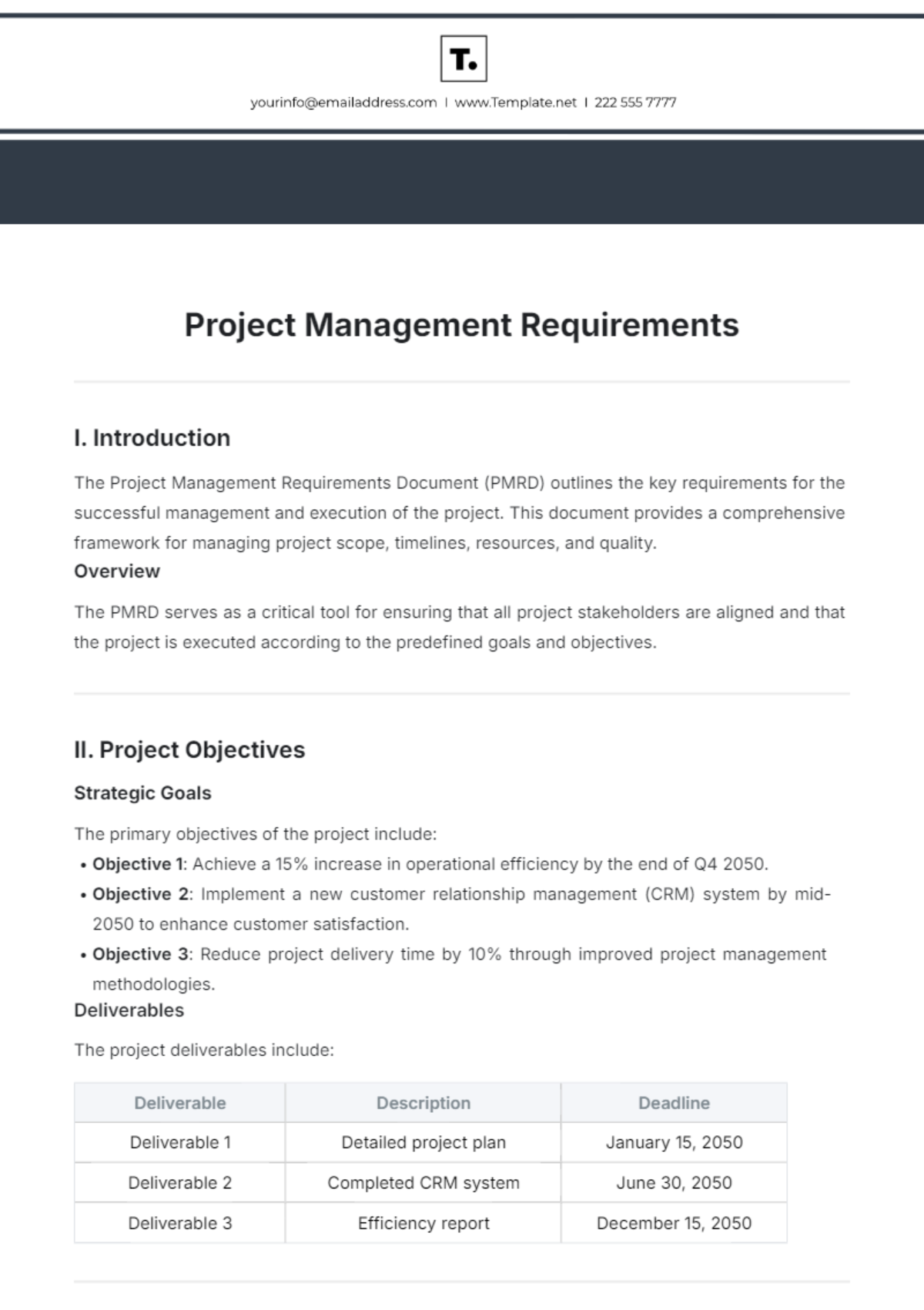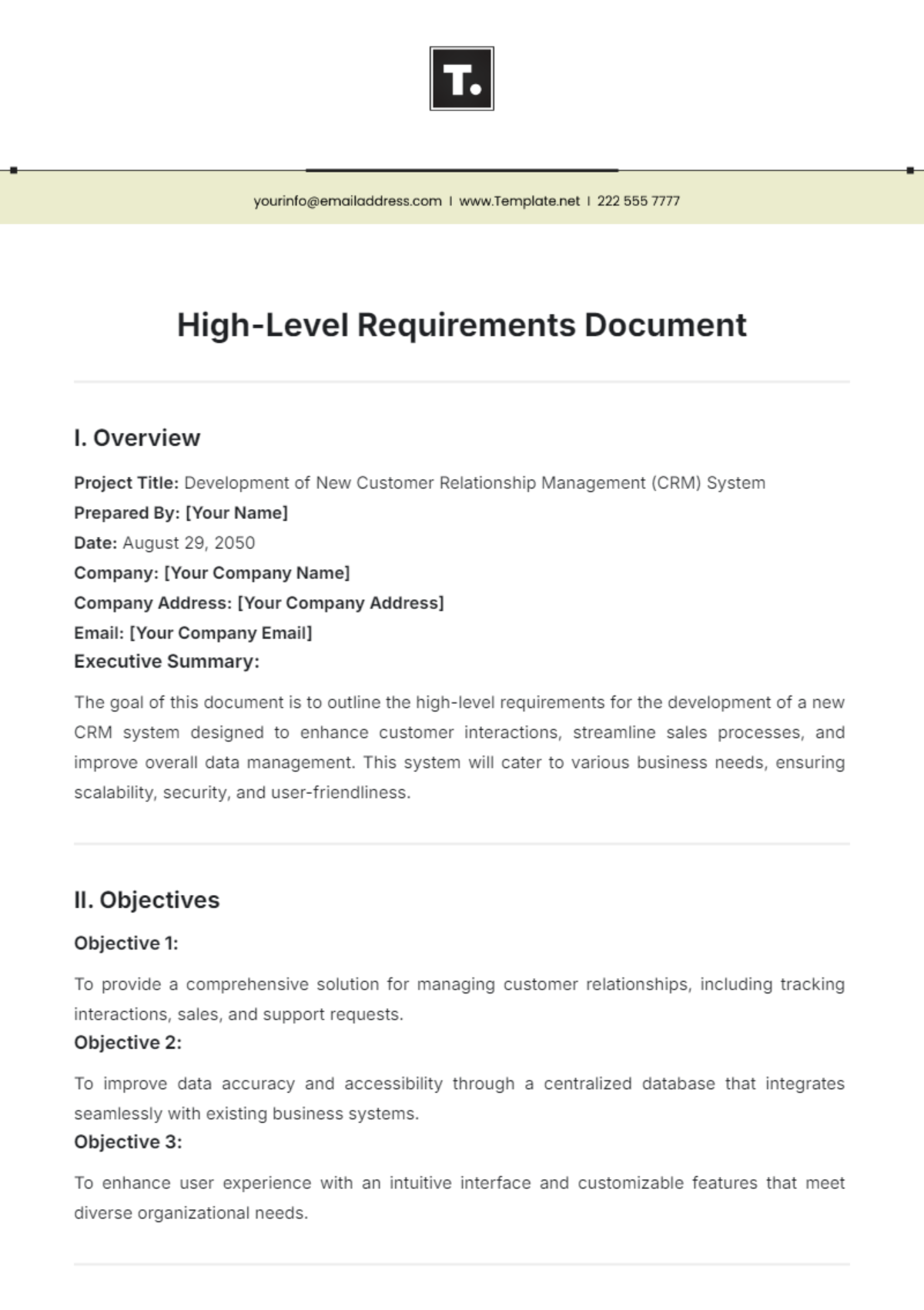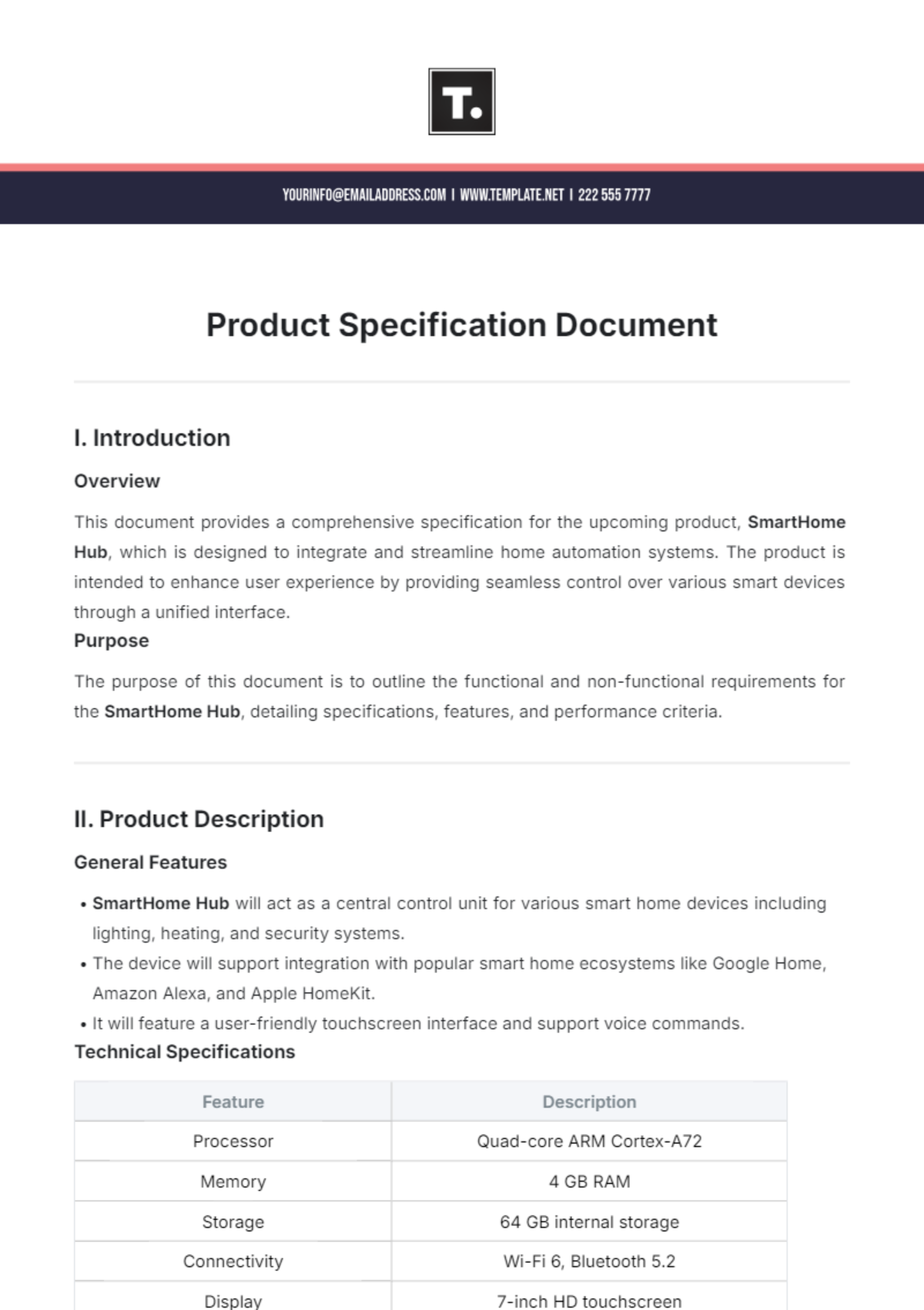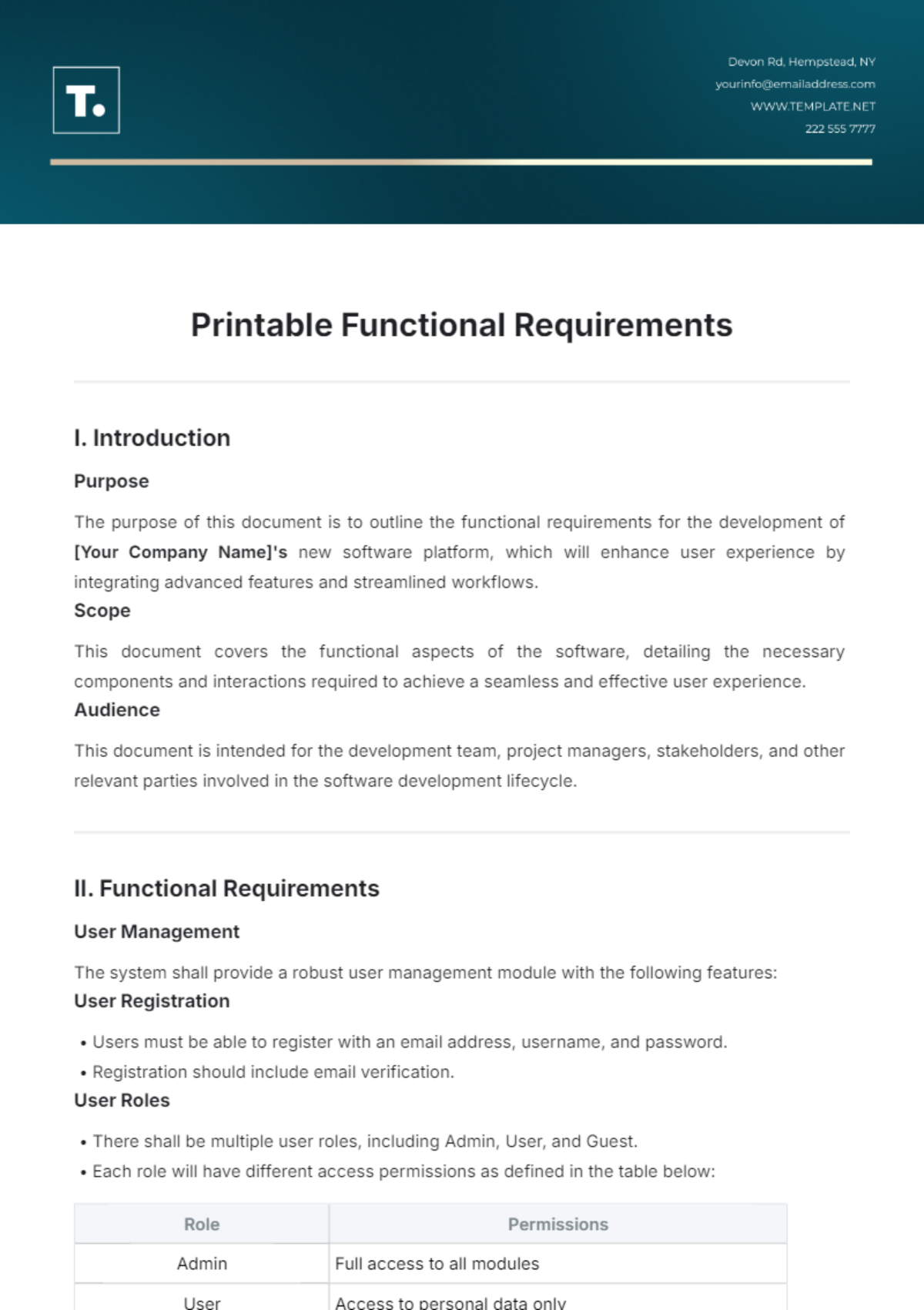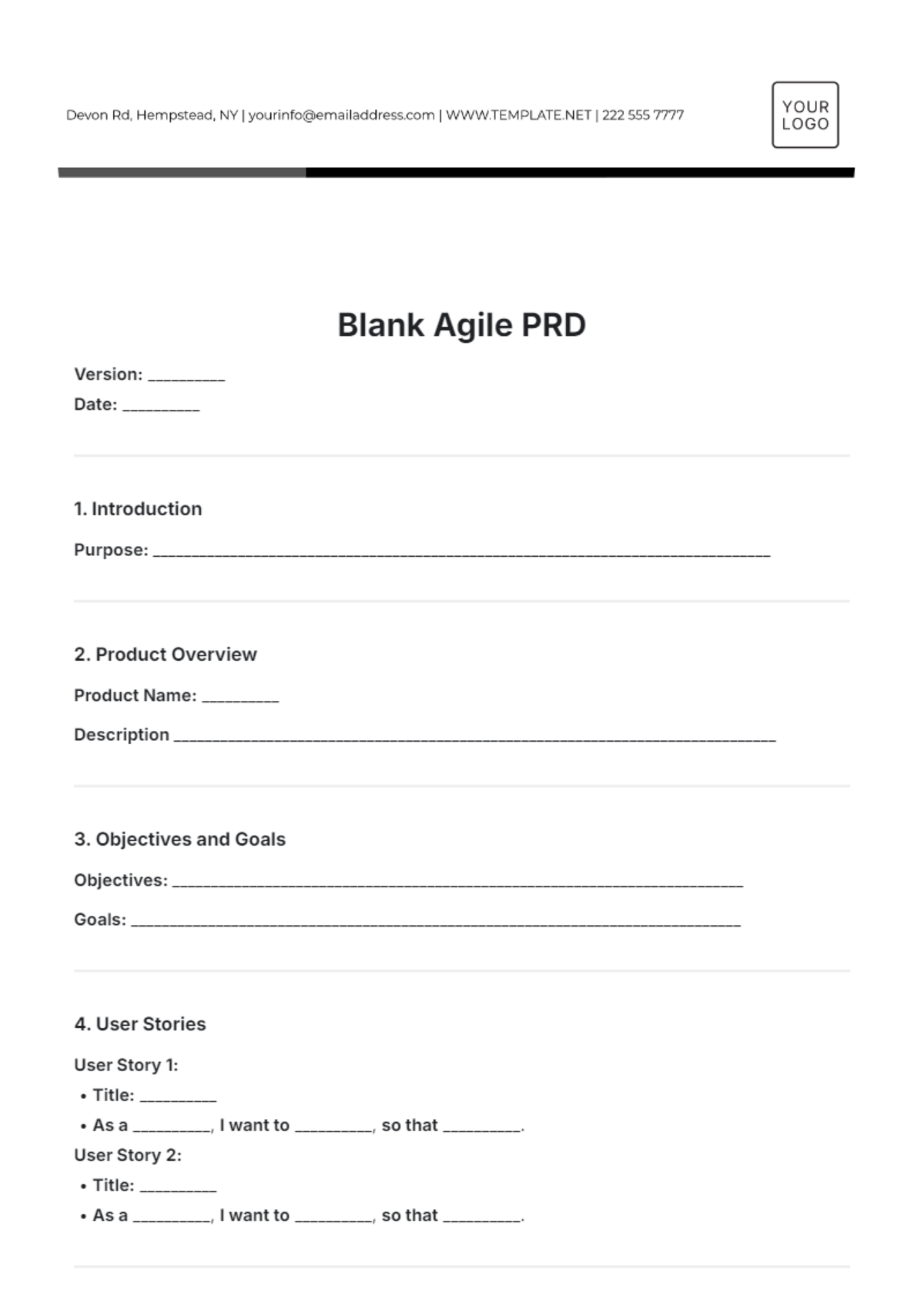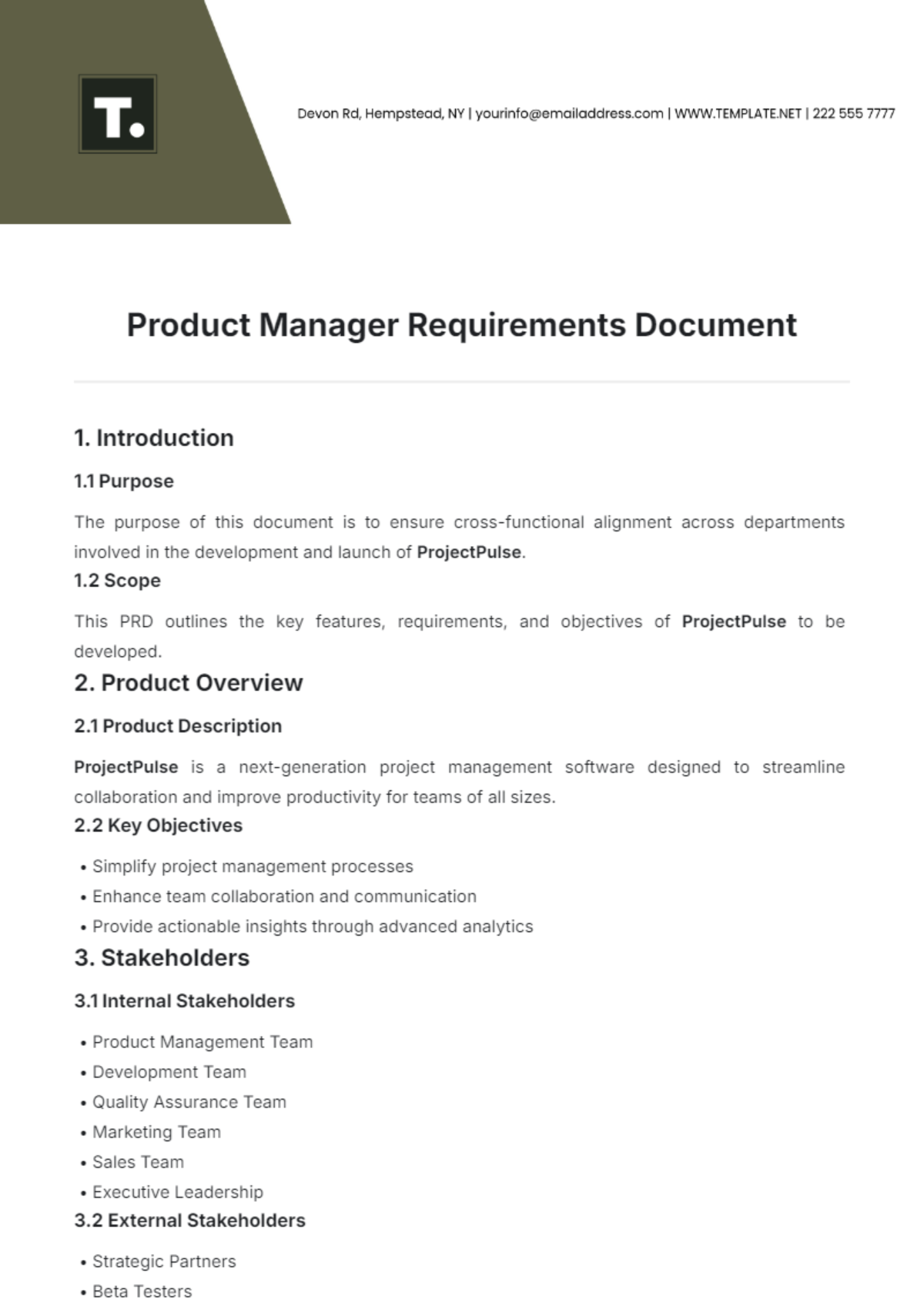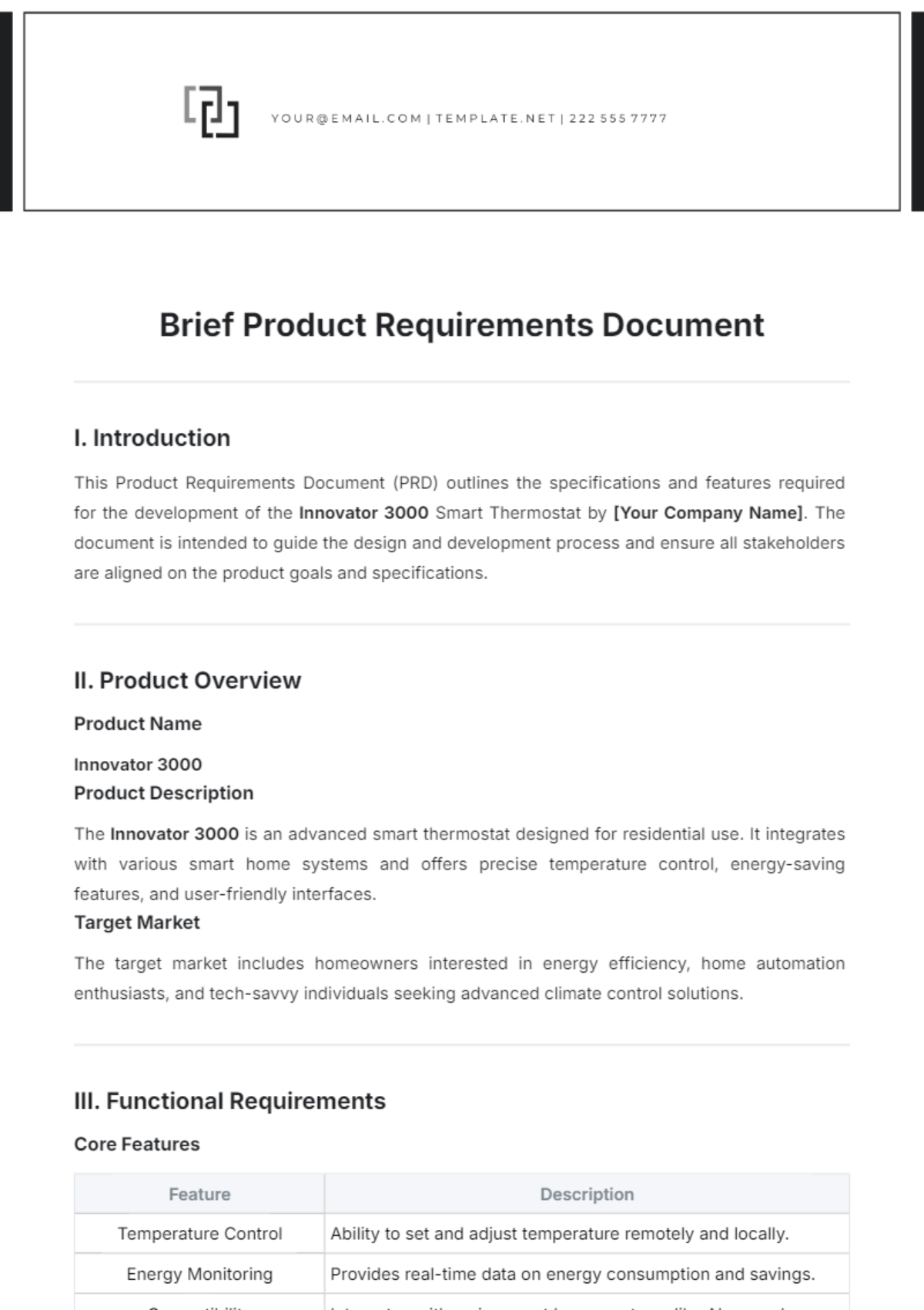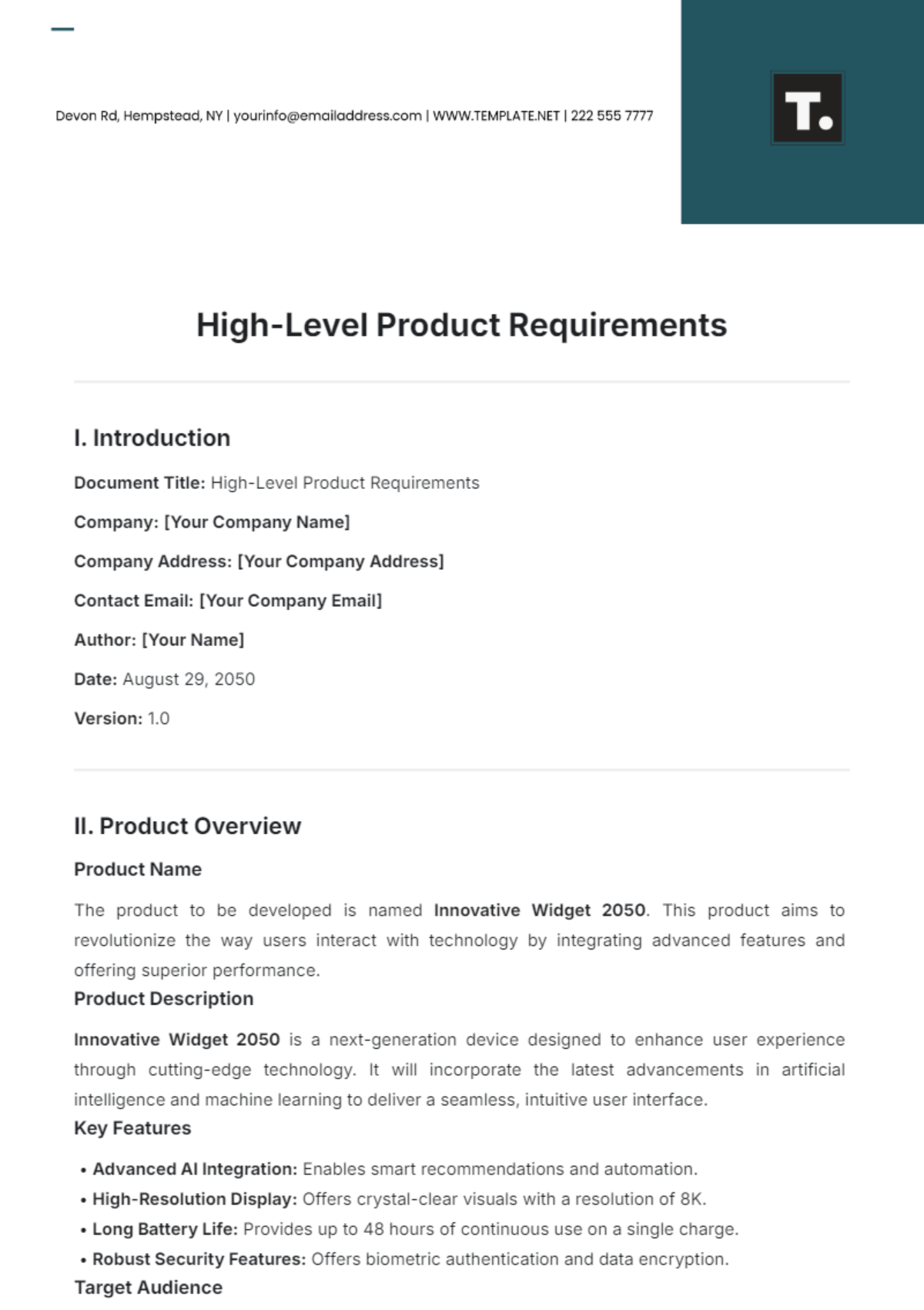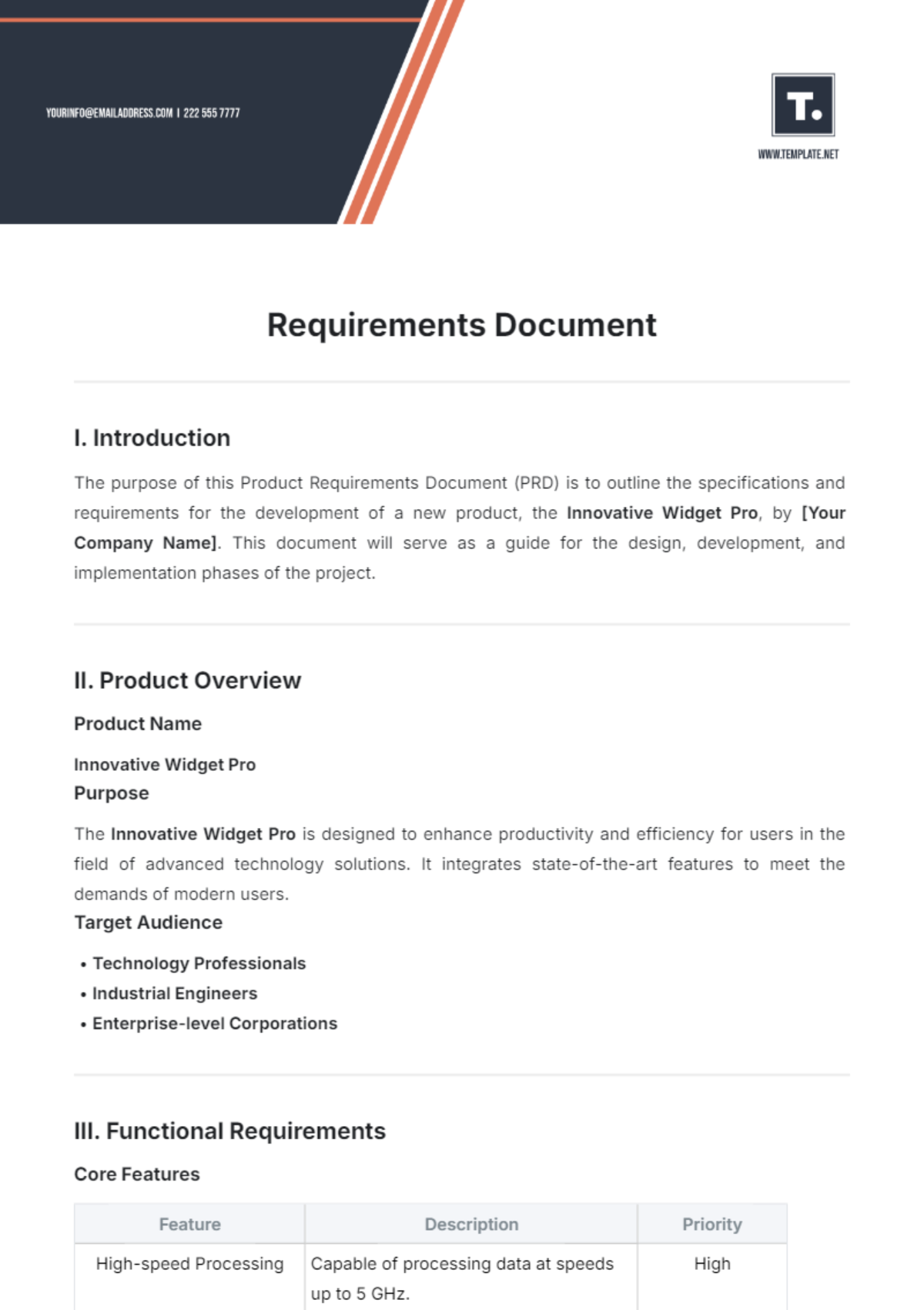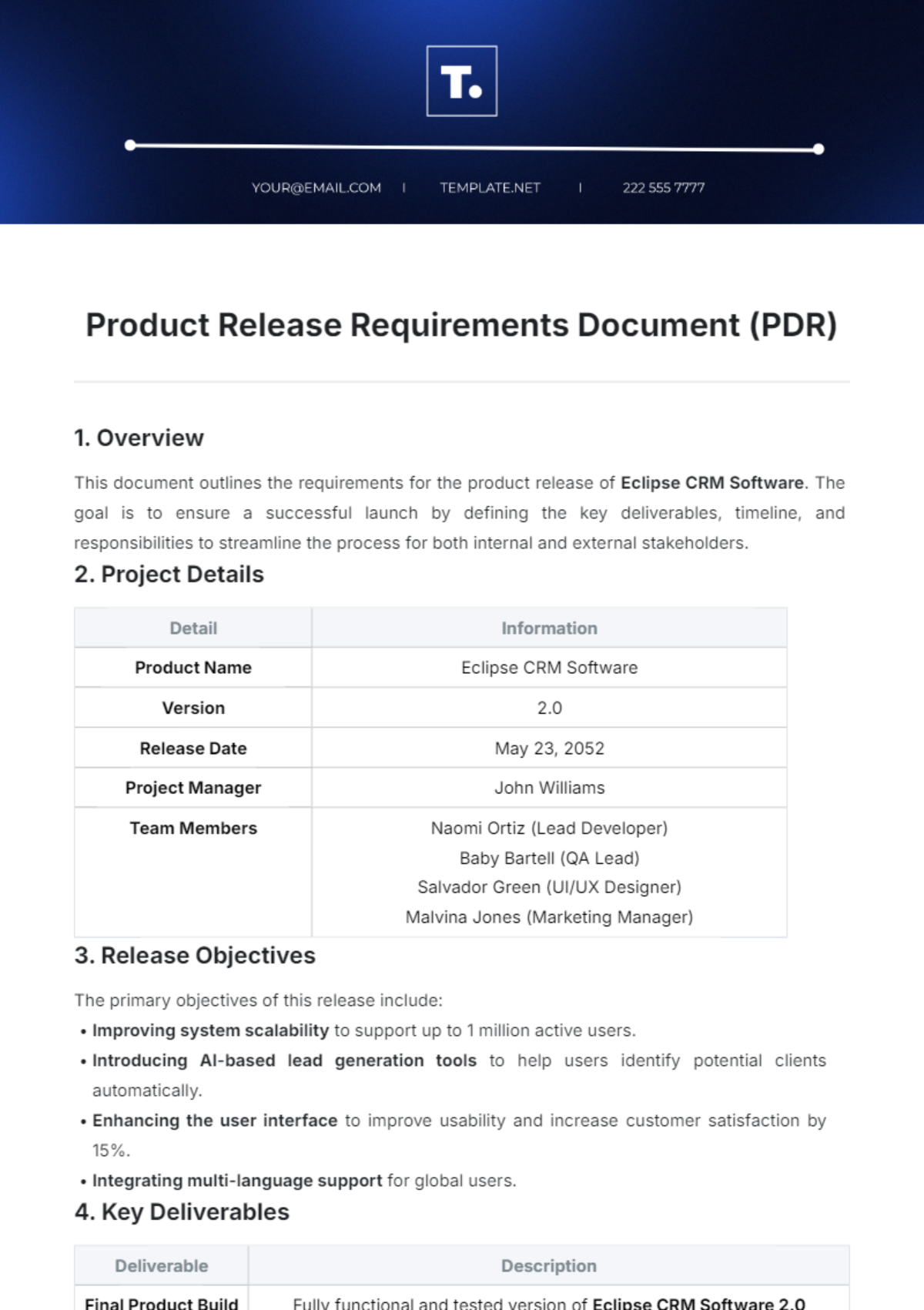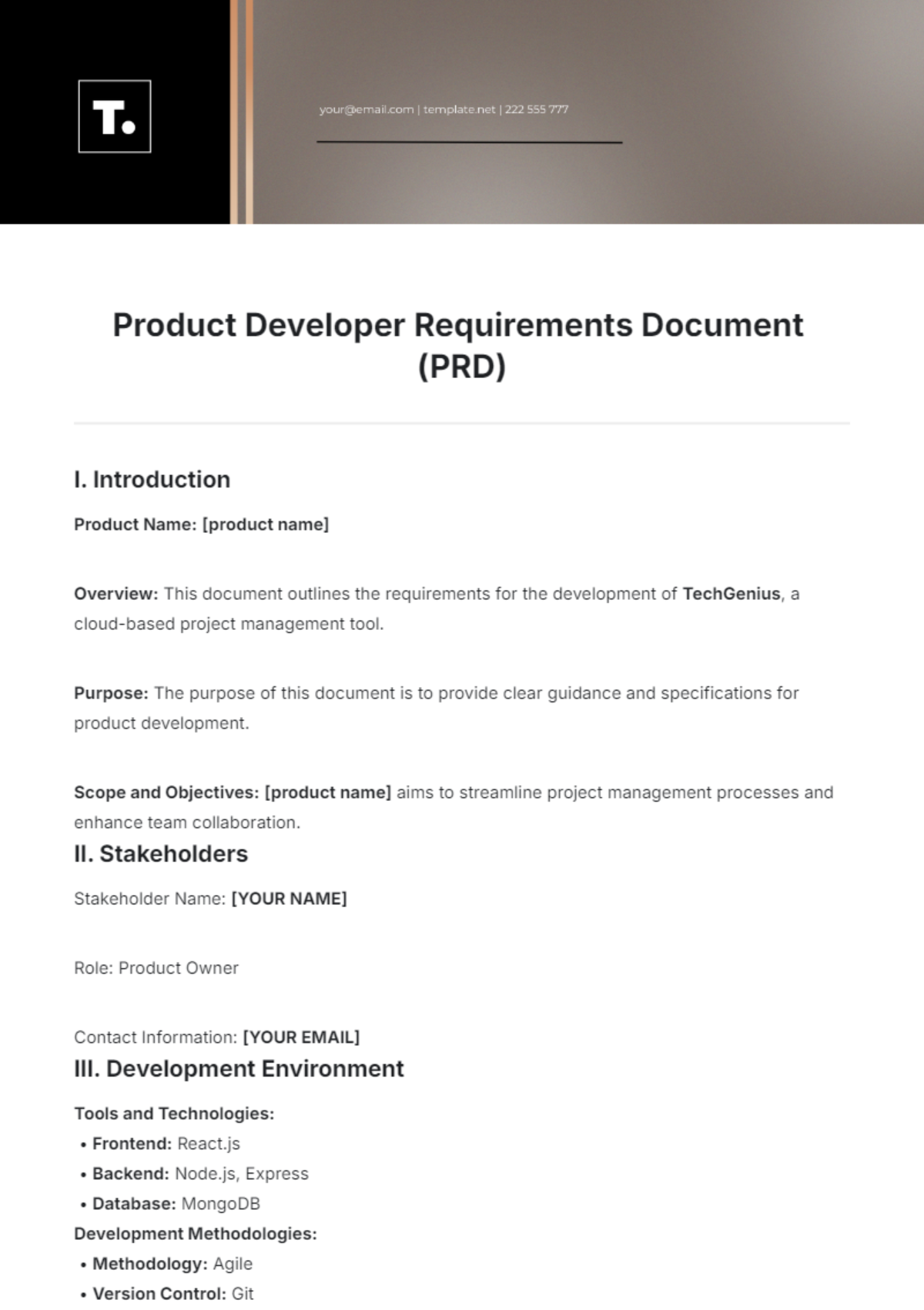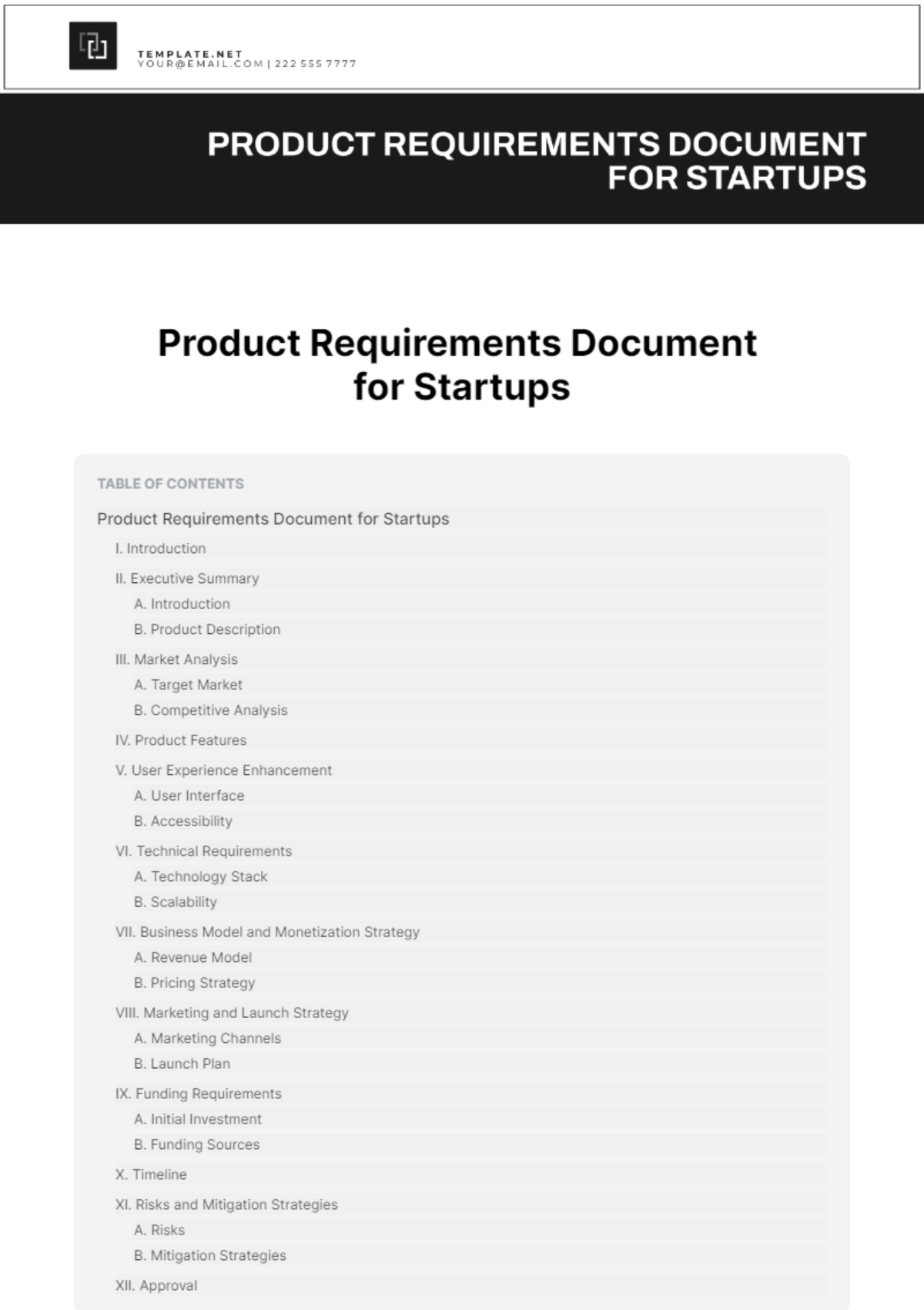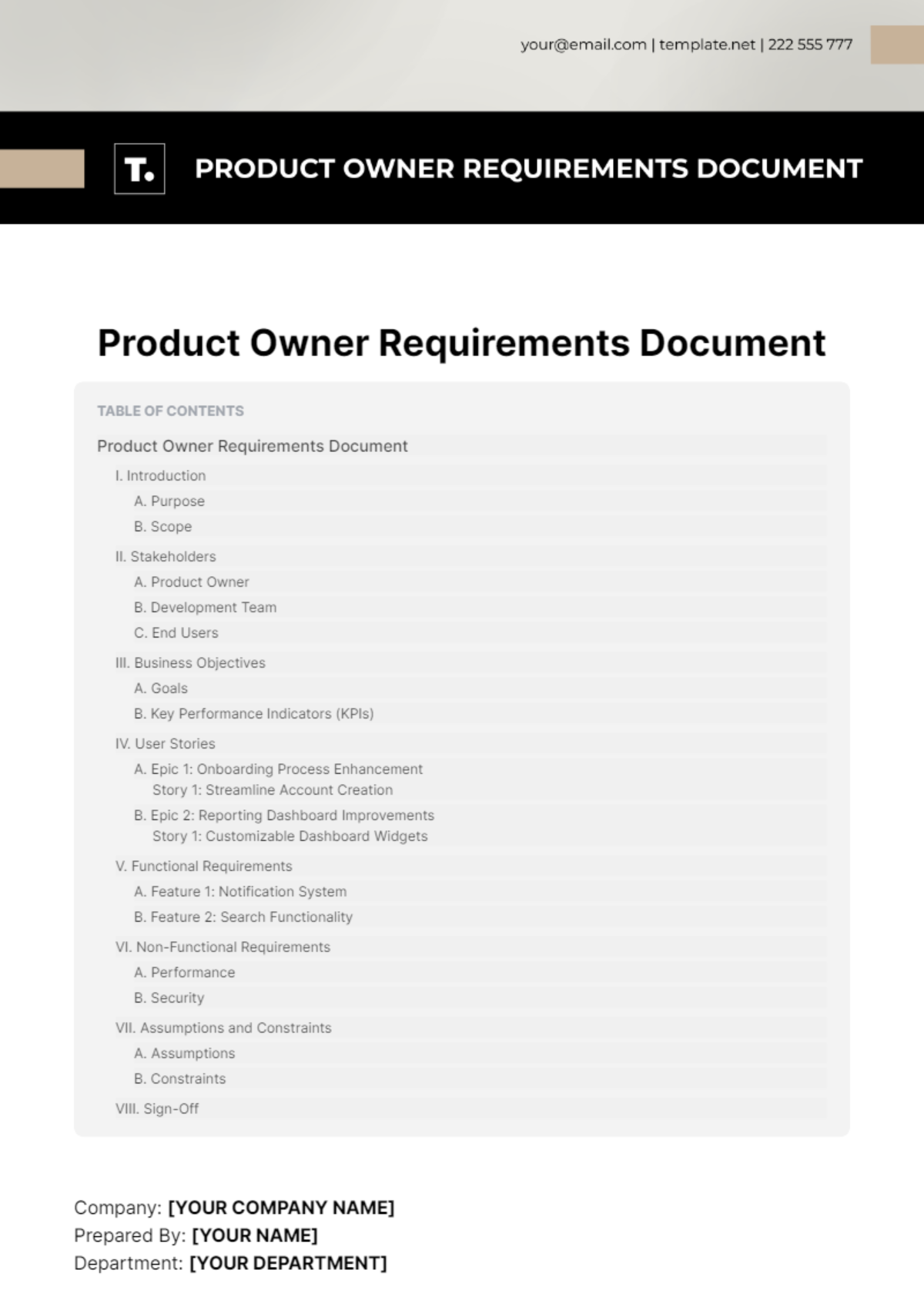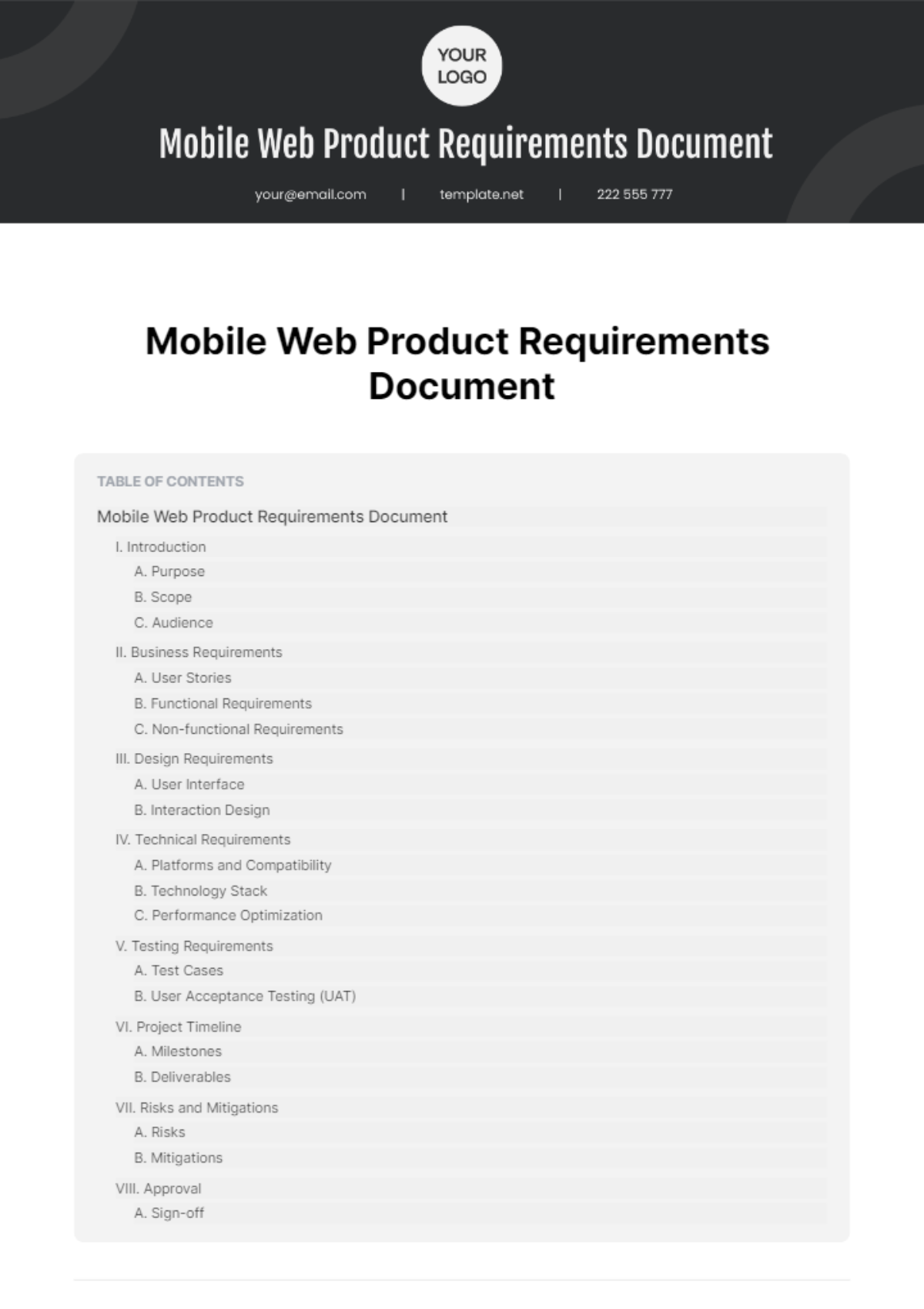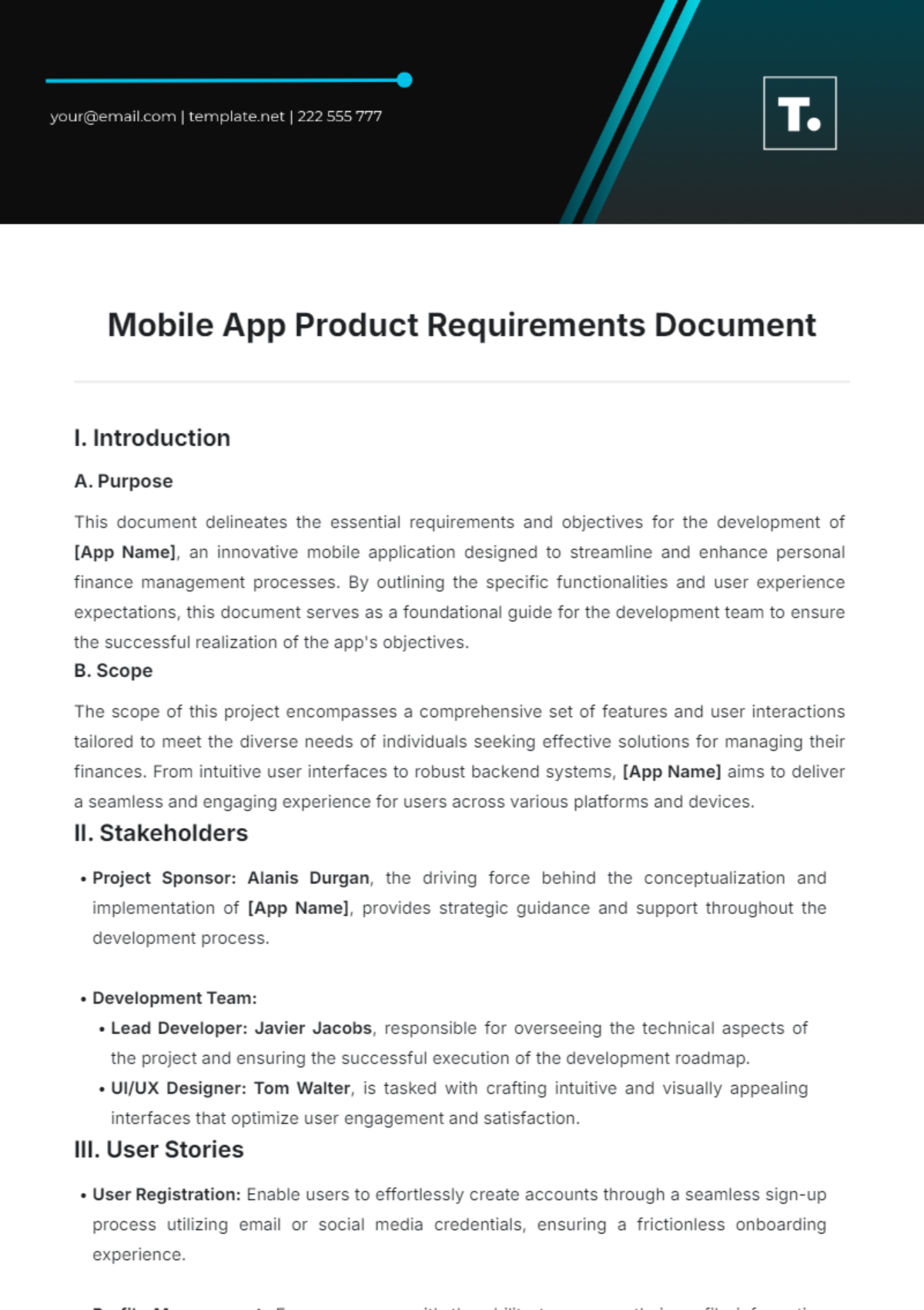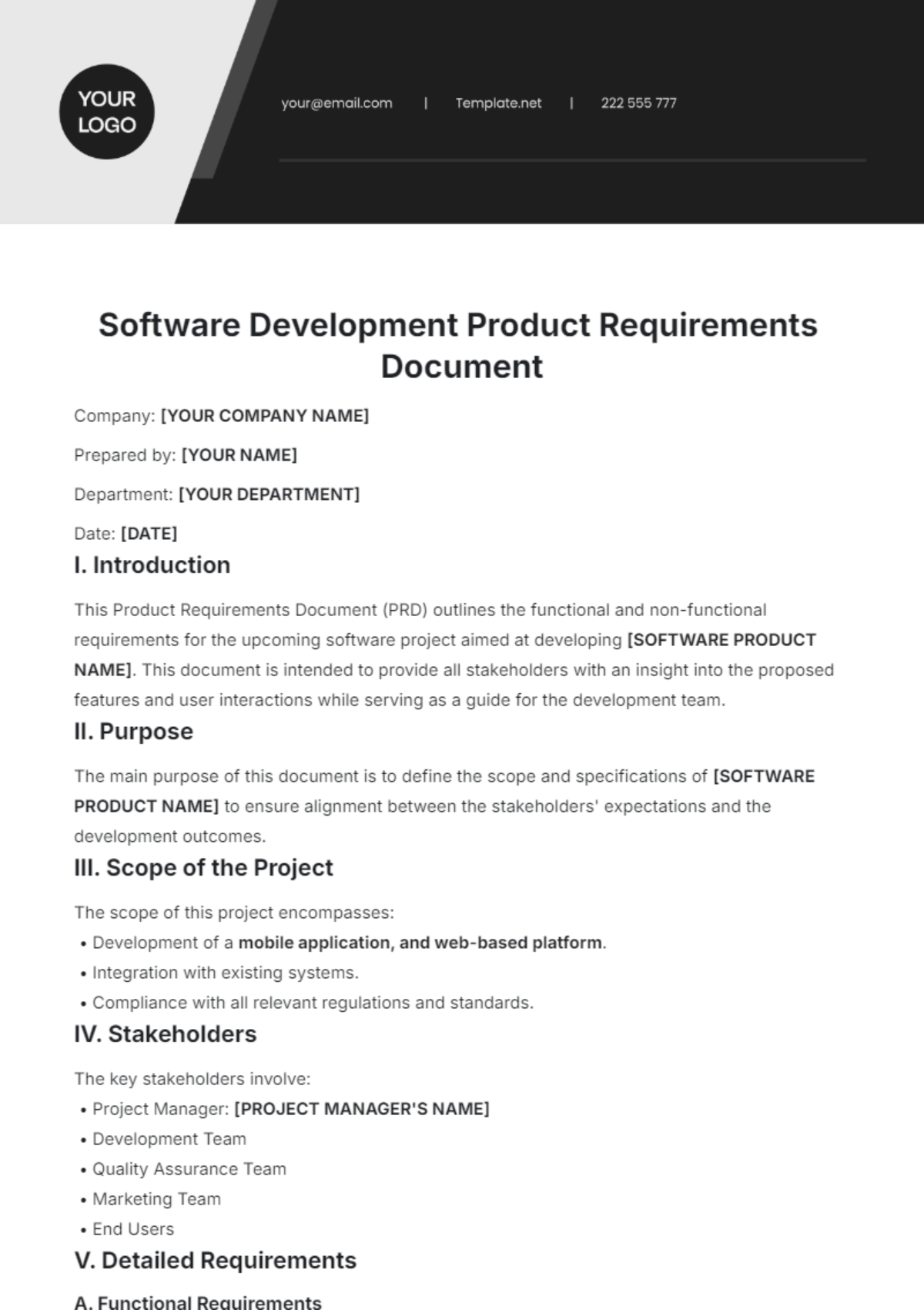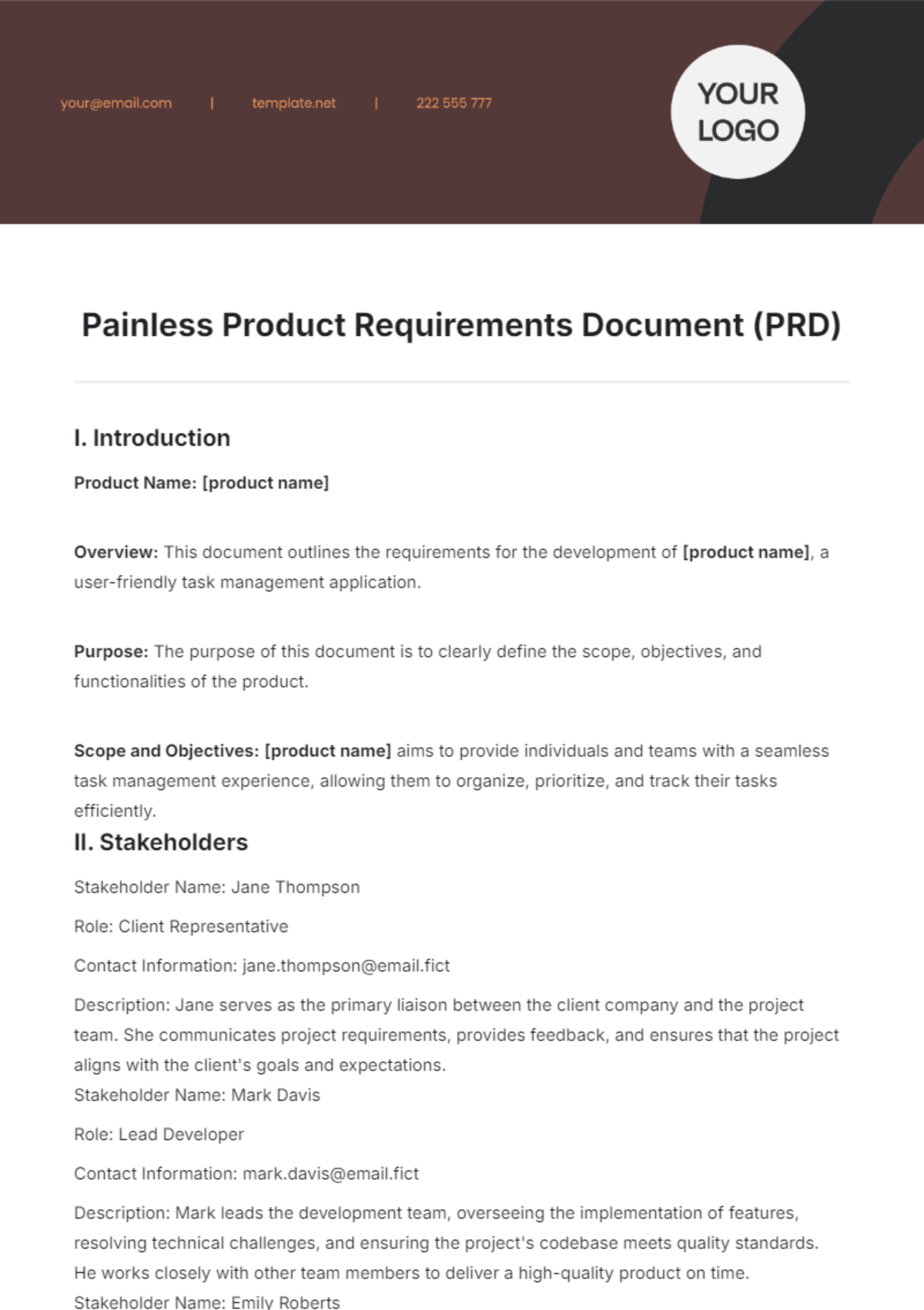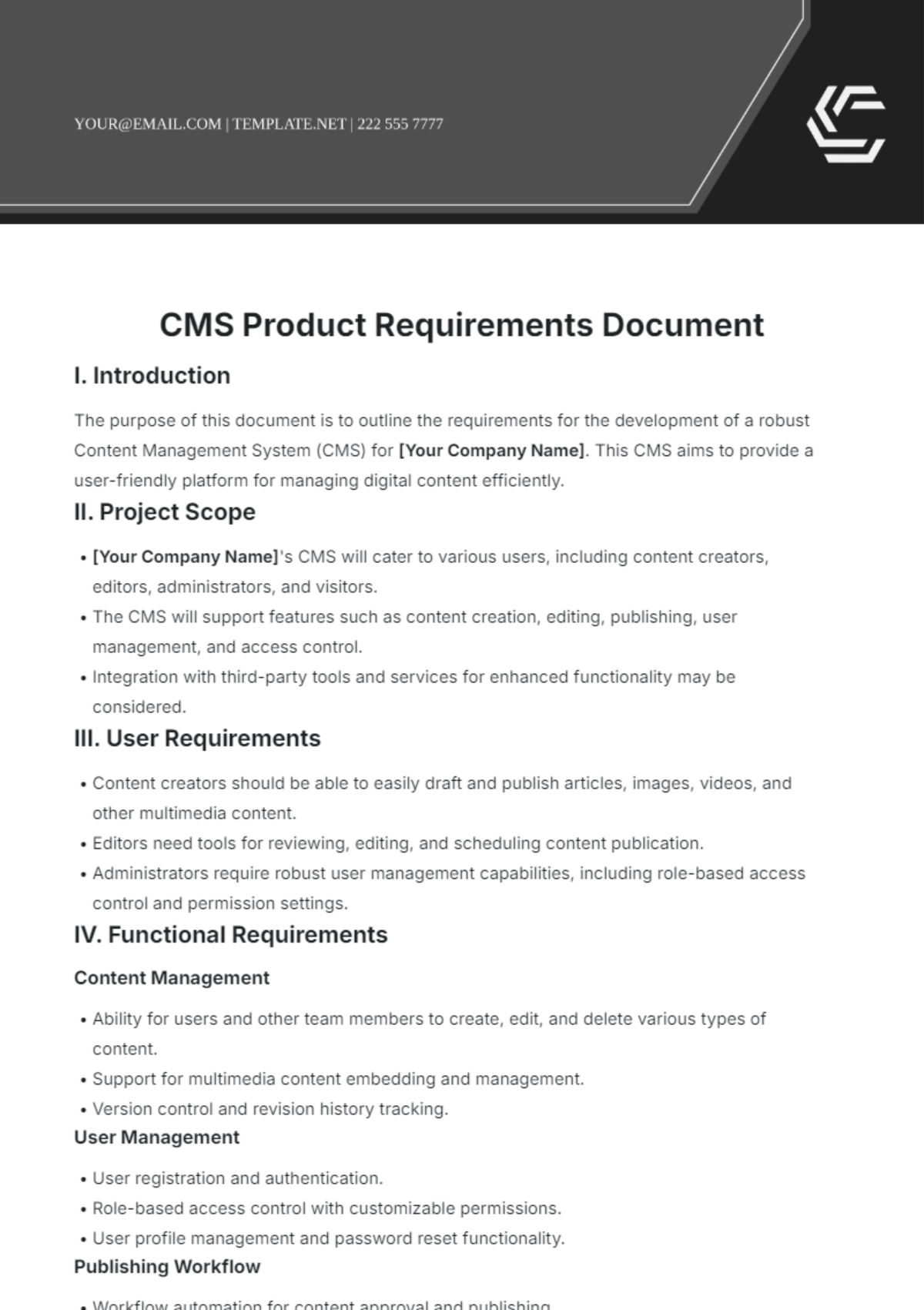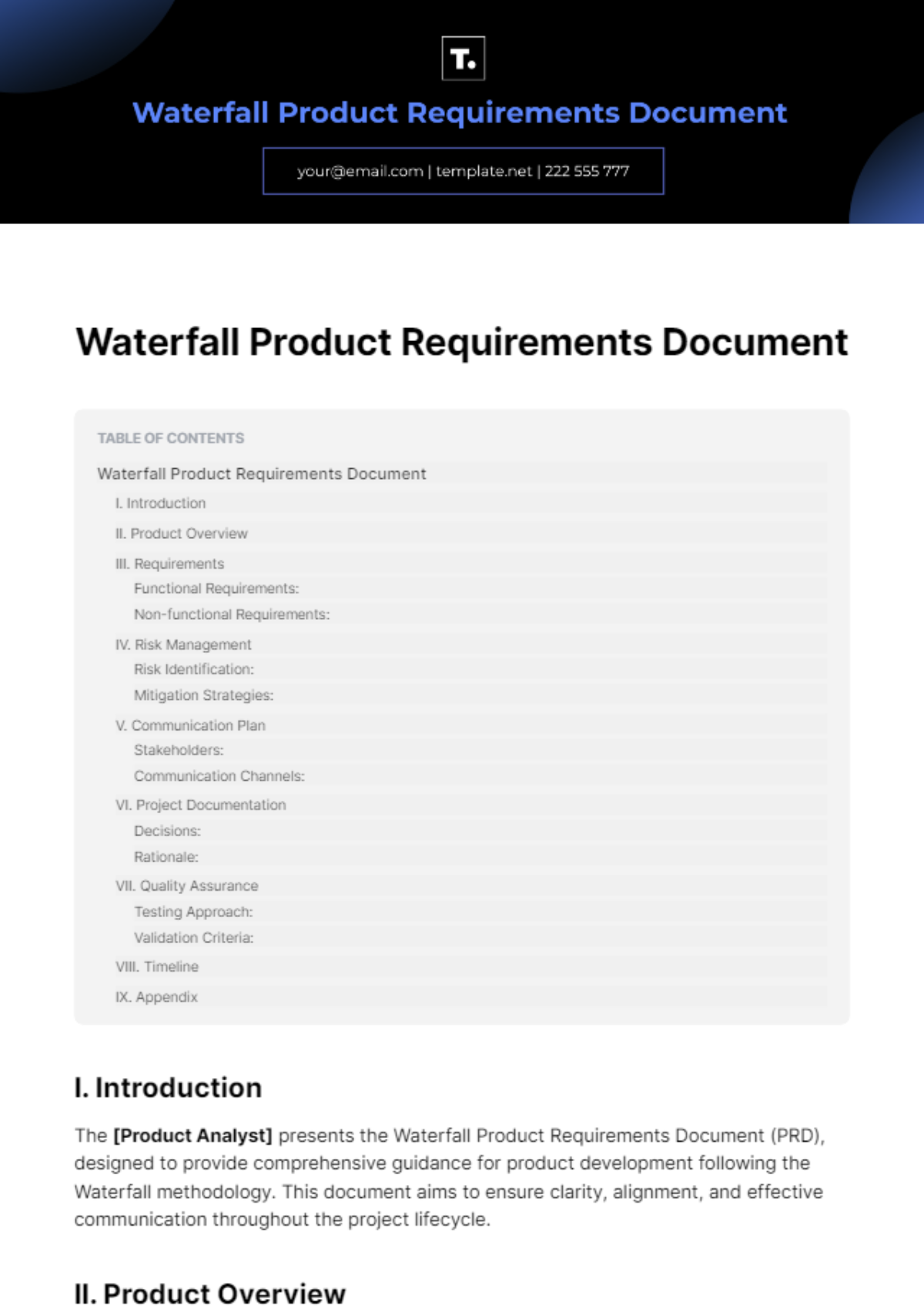Waterfall Product Requirements Document
I. Introduction
The [Product Analyst] presents the Waterfall Product Requirements Document (PRD), designed to provide comprehensive guidance for product development following the Waterfall methodology. This document aims to ensure clarity, alignment, and effective communication throughout the project lifecycle.
II. Product Overview
Product Name: [NeptuneCRM]
Purpose: [NeptuneCRM] is a customer relationship management platform designed to streamline sales and marketing processes for small and medium-sized businesses.
Target Audience: Sales representatives, marketing professionals, and business owners.
Key Features:
Lead Management
Contact Segmentation
Email Campaign Automation
III. Requirements
Functional Requirements:
Ability to import leads from CSV files.
Customizable contact fields for segmentation.
Automated email scheduling and tracking.
Non-functional Requirements:
Response time for email delivery should be under 5 seconds.
Platform should be compatible with major web browsers (Chrome, Firefox, Safari).
Data encryption to ensure security and compliance with GDPR regulations.
IV. Risk Management
Risk Identification:
Potential delays in development due to resource constraints.
Integration challenges with third-party APIs.
Security vulnerabilities leading to data breaches.
Mitigation Strategies:
Regular project status meetings to monitor progress and address resource issues.
Thorough testing and validation of third-party integrations.
Implementation of robust security measures, including encryption and access controls.
V. Communication Plan
Stakeholders:
[John Smith (Project Manager)]
[Emily Johnson (Lead Developer)]
[Sarah Thompson (Marketing Manager)]
Communication Channels:
Email: Regular updates and announcements.
Meetings: Weekly status meetings to discuss progress and address any issues.
Project Management Tool: Use of Jira for tracking tasks and assignments.
VI. Project Documentation
Decisions:
Selection of AWS for hosting infrastructure.
Integration of MailChimp for email campaign automation.
Decision to prioritize lead management module in initial development phase.
Rationale:
AWS chosen for scalability and reliability.
MailChimp selected for its user-friendly interface and robust features.
Lead management prioritized based on feedback from key stakeholders.
VII. Quality Assurance
Testing Approach:
Unit Testing: Testing individual components for functionality.
Integration Testing: Testing interactions between different modules.
User Acceptance Testing: Involvement of end-users to validate product usability.
Validation Criteria:
All critical functionalities must pass automated tests with a success rate of at least 95%.
User feedback collected during beta testing phase to address any usability issues.
Compliance with industry standards and best practices.
VIII. Timeline
Milestone | Description | Deadline |
|---|---|---|
Kickoff Meeting | [Initiate project and introduce team members] | [January 15, 2050] |
Design Phase | [Develop wireframes and prototypes] | [February 28, 2050] |
Development Phase | [Implement features and functionalities] | [April 15, 2050] |
Testing Phase | [Conduct QA testing and bug fixes] | [June 30, 2050] |
Deployment | [Release product to production environment] | [August 15, 2050] |
IX. Appendix
User Personas
Use Case Scenarios
Technical Specifications
Prepared by: [Your Name]
Company: [Your Company Name]
Date: [DATE]
